Revue électronique d’études sur le monde anglophone
Accueil Numéros 20.1 1. Creative Writing IV. Creative Writing and Didactics Creative writing teaching-learnin...

Creative writing teaching-learning practice in second language learning: a didactic study
This contribution comprises a didactic analysis of a course in literary criticism and creative writing based on a programme of transcultural poetry and plurilingual creative writing activities loosely inspired by Oulipean writing constraints. First, the notions of jargon and thought style (Sensevy, Gruson, et Le Hénaff, 2019; Bloor, 2020; Bloor, 2022) serve to identify the epistemic potential of this course in relation to canonical cultural practices in the fields of literary criticism and creative writing. Second, a clinical (Foucault, 1963) approach serves to describe and explore empirical examples of class activity with two objectives: first, to identify the construction and appropriation of the knowledge at stake, second, to situate this knowledge in relation to canonical cultural practices. With the help of the notions of jargon and thought style , we will try to reveal how the students engage with practices that show an epistemic relation to canonical, knowledgeable practice. Our study also sheds light on the way in which the affect of the (M)other tongue might be harnessed to irrigate second language expression (Greaves & De Mattia-Viviès, 2022).
Dans cette contribution nous analysons d’un point de vue didactique un enseignement en critique littéraire et écriture créative, conçu autour d’un corpus de poésie transculturelle et d’activités d’écriture plurilingue fondées sur la notion de contrainte oulipienne. Dans un premier temps, les notions de jargon et de style de pensée (Sensevy, Gruson, et Le Hénaff, 2019; Bloor, 2020; Bloor, 2022) nous permettront d’identifier le potentiel épistémique de cet enseignement par rapport aux pratiques culturelles de référence dans le domaine de l’écriture créative et de la critique littéraire. Dans un deuxième temps, une approche clinique (Foucault, 1963) est dédiée à la description et l’exploration d’exemples empiriques étudiés en cours avec deux objectifs : d’abord, identifier la construction et les signes d’appropriation du savoir en jeu, ensuite situer ce savoir par rapport aux pratiques culturelles de référence. Grâce aux notions de jargon et de style de pensée , nous chercherons à expliciter comment les étudiant.e.s s’engagent dans des pratiques qui démontrent une parenté épistémique avec les pratiques savantes de référence. L’étude éclaire également la manière dont l’affect de la langue maternelle peut être mobilisé afin d’irriguer la langue seconde (Greaves & De Mattia-Viviès, 2022).
Entrées d’index
Mots-clés : , keywords: , texte intégral.
1 The objective of this paper is to present some preliminary conclusions on the defining aspects of creative writing, and in particular creative writing in second and foreign language learning, as a body of knowledge. It seeks to address a number of key questions in relation to the field with a view to offering some theoretical foundations and methodological tools for future research.
- 1 Poetry that explores the experience of living between languages and cultures, by poets from the Uni (...)
2 The study is interdisciplinary in origin and form as it applies analytical tools developed within the field of the Educational Sciences to research work – itself interdisciplinary as drawing on plurilingualism and psychoanalysis – developed in the field of English Studies. Sara Greaves has researched and practised creative writing in relation to translation studies, the plurilingual Skin-voice and the Mother tongue (Greaves and Schultze, 2012; 2015, Greaves, in press) over a period of several years. Using a clinical approach and the theoretical tools of a didactic analysis, Tracy Bloor seeks to offer some insights into the use of creative writing teaching-learning practice by examining a course developed by Sara Greaves. Based on transcultural poetry 1 and creative writing practices, this course was part of an English language degree programme in a French university.
3 The use of the theoretical and methodological tools developed within the educational sciences to examine this programme sought to render visible how the teaching-learning practice analysed here, guided students to experience and experiment a creative use of the English language. This is a research question of particular interest: creative writing is a relatively new field which is difficult to comprehend as a teaching-learning practice. In some ways it still struggles for academic recognition, perhaps particularly in France.
- 2 Translation by Tracy Bloor. See « connaisseur pratique » : http://tacd.espebretagne.fr/glossaire/?n (...)
- 3 « Preuves culturelles ». Translation by Tracy Bloor. « Vers une épistémologie des preuves culturell (...)
4 The effectiveness of the course, and the knowledge of the teacher as a practical connoisseur 2 of the practice, are taken as an a priori . The focus of the study was not so much to assess the success of the course in relation to a pre-defined set of objectives, but rather to gain insight into how creative writing works as a teaching-learning practice. In other words, to identify the mechanisms at work which made this programme an effective means of achieving linguistic and literary enrichment so as to gain some insight into creative writing language learning practices in general. In founding the study on the analysis of the teaching-learning didactic activity of a practical connoisseur in the domain, the study is situated within the practice-based evidence paradigm (Bryk, 2015), or more precisely that of cultural evidence and the paradigm of accomplishment 3 (Sensevy, 2022). That is to say, in examining the course content, together with the teaching strategies and know-how required for the course content to work effectively, its findings present the cultural evidence of a practical connoisseur’s practice. This expert practice, or art de faire , is itself founded on the skills and knowledge of the domain of creative writing and language learning acquired through research and experimentation over a period of several years using multidisciplinary sources; it is the source of the practical connoisseur’s effective regulation of the teaching-learning practice.
4 In the sense used by Kuhn (1970/1996).
5 The article is organised in the following manner. First, the hypotheses underlying the course content as well as the research questions of the paper are presented, followed by a general outline of the epistemological underpinnings of the conception of language guiding the didactic analysis of the teaching-learning practice explored. A description of the theoretical notions of jargon and thought style used to model and analyse the “classroom” practice (the course was online) are next described. This includes the Oulipian writing constraints which are presented as an exemplar 4 of creative writing practices as a body of knowledge. Detailed extracts of classroom activity, as well as examples of student productions, are then analysed using the notions of jargon and thought style . Finally, the findings of the study are reported: these are essentially a number of insights into how knowledge was constructed in the different teaching-learning situations analysed.
1. Hypothesis and Research Questions Explored
6 The approach presented in this paper raises some questions regarding the social aspect of second language learning and the kinds of didactic activity that would be effective in its acquisition. A principle underlying the didactic analysis of this work is that meaning is constructed in social spaces, and that language is not a uniquely individual phenomenon (Vygotsky, 1934; Mead, 1931; Dewey, 1938/1997; Halliday, 1978; Maniglier, 2016; Sensevy et al., 2019; Bloor, 2020; Bloor & Santini, 2022). This principle was coherent with the underlying principles embedded in the teaching-learning practice analysed. The major tenets of the course developed by Sara Greaves were that poetry, and in particular transcultural poetry, is a fruitful genre for exploring personal expressions of a language; that in conjunction with creative writing activities, it facilitates the construction of teaching-learning situations that allow for the exploration of creative expression in communication with others. This objective was not intended as an invitation for students to write autobiographical texts, but rather to present them with an opportunity to explore the links between the personal and the universal and, ideally, to embark them on a journey of linguistic enrichment and transcultural emancipation.
7 The first hypothesis explored in the course, which emerged from Sara Greaves’s work on its development over a period of several years, is that one of the reasons the plurilingual creative writing activities are of interest for second language learning is that they enable students to explore and extend their own boundaries. In exploring multiple identities in interaction with others, students are encouraged to seek insight into the links within poetic language between the personal and the universal, the private and the public, the primary lalangue (Lacan, 1975) and the epic voice. The second related hypothesis of the course was that in exploring different ways of being, students might overcome the limitations of cultural determinism through artistic expression. The third related hypothesis of the course was that linguistic enrichment becomes possible in environments that provide students with the opportunity to explore the source of language itself; that is to say, in environments where the sense of self is developed in communication with others, where language takes form.
8 To apprehend better the mechanisms at work in this course, the following questions are addressed in this paper. What can be posited as a useful epistemological underpinning for the study of creative writing, in particular as a language learning practice? What epistemic potential does this relatively new field hold? What criteria can be used to identify the knowledge at stake in creative activities undertaken in classroom practice and how can effective learning be identified? Finally, how might these criteria shed light on the hypotheses underlying the course analysed.
2. Methodology
9 The didactic analysis of the classroom practice presented in this article will be undertaken using a clinical approach (Bulterman-Bos, 2008; Foucault, 1963; Santini, Bloor & Sensevy, 2018). The course took place during a period of Covid restrictions in January-April 2020, and consequently in-person lessons were not possible. For this reason, recorded videoconferences played an essential role in documenting the main features of “classroom” activity. They provided a representation of the teaching-learning practice which included a maximum of detail without any additional commentary or interpretation. The recordings were then transcribed and carefully described (Ryle, 1968/2009; Sensevy, 2011, Bloor & Santini, 2022) before any attempt was made to analyse them. This was to provide an initial source of empirical data which was as close as possible to the actual practice.
10 Extracts from the recorded activity were then chosen as emblematic examples (Kuhn, 1977) to provide clues (Ginzburg, 1979) to identify signs of activity pertinent to the questions explored in this research. This required identifying the language explored by students in class in relation to the culturally-constructed targeted body of knowledge of literary criticism and creation. The notions of jargon and thought style were used to model aspects of the didactic activity so as to situate the language explored by students in relation to that of literary criticism and creation as a specialist practice. This required some understanding of literary criticism and creation as a culturally-constructed body of knowledge. To that end, the practices of the Oulipo community are presented as an exemplar of this body of knowledge so as to lend some insight into the jargon and thought style inherent in poetry as a culture and creative writing as a body of knowledge.
3. Epistemological Underpinnings and Theoretical Notions
11 Identifying what might constitute the creative use of a target language is a complex task as it raises the question as to the nature of language itself. Depending on the field of research, language might be viewed as linguistic phenomena that can be studied as an abstract system (Bloomfield, 1933/1984; Chomsky, 1957), or as a semiotic system (Peirce, 1878), or as being inherently context sensitive (Foucault, 1969; Halliday, 1985). In the case of this study, being able to progress to a creative use of a target language implied the necessary condition of accessing the source of language itself. However, the question regarding the origin of language is complex. It involves questioning where the transition from thought to language might occur: in people’s heads or in some form of interpersonal space in a meshwork of semiotic systems? (For the latter view, see Vygotsky, 1934/2012; Mead, 1931; Dewey, 1938/1997; Halliday, 1978; Maniglier, 2018; Bloor, 2020).
12 Wittgenstein’s conception of the nature of language is a useful starting point for a didactic analysis, and it is the view of language adopted for the analytical aspect of this study. From Wittgenstein’s perspective words, gestures, expressions and so on, come alive within a language game, a culture or a “form of life”: “For a large class of cases —though not for all— in which we employ the word ‘meaning’ it can be defined thus: the meaning of a word is its use in the language.” (Sect. 43 of Wittgenstein’s Philosophical Investigations , 1953). In other words, the meaning of a word can be understood by an investigation of the different uses to which it can be put. As with the diversity of functions of different tools in a toolbox, words can be used in a range of functions.
13 Wittgenstein introduces the concept of language games in his activity-oriented perspective on language. He doesn’t give a strict definition of the term but rather a long list of examples as an illustration of how words have meaning in the context of different activities ( Philosophical Investigations 23). He states “… the word ‘language- game ’ is used here to emphasise the fact that the speaking of language is part of an activity, or of a form of life” ( Philosophical Investigations 23).
14 Thus, in this study language is seen as being composed of language games within forms of life which produce certain thought styles (Fleck, 1935/2008; Bazerman, 1988; Sensevy, Gruson, Le Hénaff, 2019; Bloor, 2020; Bloor and Santini, 2022) together with an associated jargon (Sensevy et al . 2019; Bloor, 2020; Bloor and Santini, 2022). Based on a Wittgenstein conception of the nature of language, the notions of jargon and thought style are proposed as useful tools for modelling and analysing didactic practice (Bloor, 2020; Bloor, 2022). These notions are described in detail below; they will be used to analyse the teaching-learning practice explored in this transcultural poetry/creative writing course.
15 In general usage, the term jargon tends to have a somewhat negative connotation and can be associated with an obscure, even pretentious use of language. However, there is no negative connotation in the notion of jargon as used in this study. Its use is akin to a dictionary definition of the term, for example, that of the Cambridge Dictionary: “special words and phrases that are used by particular groups of people, especially in their work”. Our use of the term goes beyond this definition of specialised vocabulary to include an understanding of how the skills and crafts of a domain can literally be embedded in the language of its associated practice: it thus denotes more than vocabulary as it includes an understanding of the background to the practice which also gives it shape. In the case of this transcultural poetry/creative writing course it can therefore be understood as a system of expressions specific to this cultural practice; it both produces and is produced by that same cultural practice and its accompanying thought style .
16 The jargon of a cultural practice is thus its linguistic system: a network of terms, expressions and various discourses that might occur within the forms of life specific to that cultural practice. An example to illustrate this point, taken from this study, is the critical literary analysis of a poem and the way it might be described and discussed within a literary community sharing that form of life. Such discussions would entail specific language games (Wittgenstein, 1953) associated with literary criticism. These would then be both the source and the result of the jargon related to the practice. This point will be illustrated with specific examples in 4.1.1.
5 Cf. Christine Collière-Whitehead’s contribution to this issue.
- 6 Cf. the Skin-voice (« Voix-peau ») in Sara Greaves, Côté guerre côté jardin : excursions dans la po (...)
- 7 For instance: Scottish poets Jackie Kay and Tom Leonard, Guyanese poets Grace Nichols, Fred D’Aguia (...)
17 As it is in acquiring and mastering the jargon of a particular form of life that individuals ultimately come to be integrated into the thought style of a community of practice, evidence was sought in classroom activity of students’ use of the jargon of critical literacy as a sign of developing knowledge. Similarly, evidence was sought in student productions of the style and content (the jargon ) of poems analysed in class. The creative aspect of poetry as a cultural practice is more complex to illustrate due to its inherent, and even ideal unpredictability. As Craig Raine writes in Strong Words: Modern Poets on Modern Poetry, “Often language tells us what to think. Poetry, though, can use language to help us escape this tyranny of language” (Herbert & Hollis 178-9). Poetry might be seen as the crucible in which language is melted and re-moulded, a language that reaches back to what Lacan terms lalangue (1975) with its insistent sound patterning and wordplay. As such it explores our most intimate relationship with language. 5 At the same time, poetry often pertains to what might be seen as the collective, rallying point of the epic voice. For this reason, it offers the potential to explore intimate language in relation to wider social, political or existential themes. It is a genre that straddles the gap between the epic and the lyrical, in which public, even political, and personal voices often meet; the language of intimacy and sensual pleasure that transports the reader back to the early experiences of language, while challenging the norms and representations of language and society or frames of thought. 6 There is no space here for an in-depth discussion of the specifics of poetry and prose, but contemporary, transcultural poets such as those used on this course 7 often engage in fairly direct terms with the private/public divide, thus providing inspiring models for students.
18 Based on this understanding of poetry, didactic activity in which students used their second language creatively, was seen as evidence of the creative aspect of the jargon of poetry and of students engaging in the culture of poetry and creative expression. That is to say, use of language in which students seemed to capture something of the pleasurable dimension of the Mother tongue thereby irrigating their second language expression with the affect it often lacks. The conception of the Mother tongue relevant here is as a plural, not monolithic, entity that as theorised by Monique De Mattia-Viviès:
In fact, all children are at least bilingual, and most often trilingual within their Mother tongue, which can be broadly subdivided into three categories:
– lalangue, body and sound oriented, a private language shared by mother and child;
– language of the interior, articulated language, at once sociolect, idiolect, and language of affect, the language of the child’s close family circle, of their people; and
8 Cf. Monique De Mattia-Viviès’s original article, in French: « Entrer dans la langue ou dans les lan (...) – language of the exterior, including the language used at school, of varying degrees of sociological and idiolectal discrepancy with the interior language. (Greaves and De Mattia-Viviès 22) 8
19 The Mother tongue spans the spectrum from intimate to public varieties of language, just as transcultural poetry straddles the private/public divide.
3.2 Thought Style
20 A thought style refers to the intertwined perception and conception developed within a particular form of life. What one sees is not an action that is independent from the conception of the “object” of one’s gaze: there is an organic relationship between perception and conceptualization. A few common optical illusions to exemplify this disposition are the rabbit/duck and older/younger woman images: one sees a rabbit but in the next instant a duck; the wizened contours of an older woman’s face and in the following second the smooth profile of a young woman’s face and shoulders. These experiences of our own cognitive processes teach us how strongly our existing disposition to ‘see’ in a particular light will determine our take on reality: realities constructed not as individuals, but as communities in the meshworks of semiotic systems that make up the interpersonal spaces of the forms of life within which we exist (Vygotsky, 1934; Mead, 1931; Dewey, 1938/1997; Halliday, 1978; Sensevy, Gruson and Forest, 2015; Maniglier, 2016; Bloor, 2020). From this perspective, language is not separate from culture, nor an abstract tool to be used, but rather an environment in which we live (Wittgenstein 1953/2014; Maniglier, 2016).
21 This moulded disposition of any given community to perceive/conceive in a particular light is denoted in this study by the term thought style (Sensevy et al ., 2019; Bloor, 2022). What might be considered to be the appropriate thought style of literary criticism and creative expression? This is a complex question and it is beyond the objective of this paper to provide a complete answer. However, the following phenomena are posited as useful indications of students developing an appropriate thought style with regard to this cultural practice.
- 9 This includes the impact of criticism on writers (the example of Keats comes to mind, with the nega (...)
22 First, based on the premise that there is a fundamental relationship between criticism and creation 9 and that critical insight is enhanced by creative expression and vice versa, signs of students developing literary critical skills in relation to the transcultural poetry material were considered to be evidence of students developing an appropriate thought style .
10 https://www.oulipo.net/ .
23 Second, student engagement in Oulipo- inspired creative practices, described below. The Oulipo workgroup are posited as specialists of the creative process. As such, their methods can be seen as an exemplar, in the sense used by Kuhn (1970), of the thought style of a creative community. Many of the plurilingual writing practices explored in the course were loosely based on Oulipian constraints 10 in that they sought to jolt students out of their natural, habitual train of thought and mode of expression. Therefore, signs of students not writing “as themselves”, were also considered to be evidence of students developing an appropriate thought style with regard to creative expression.
24 What does it mean to write or not write as “oneself”? This question touches on issues at the heart of creative practices. When Roland Barthes claims “Language is neither reactionary nor progressive; it is quite simply fascist; for fascism does not prevent speech, it compels speech” (1977), he is decrying the coercive, socially imposed laws of language which, it might be argued, distance us from the Mother tongue. When learning a second language, this distancing effect may be increased. We have all forgotten how we learned to speak; disrupting students’ habitual writing style with the oulipo-inspired plurilingual, creative writing activities was a strong feature of the course. The intention was to invite students to regress back to the early stages of language learning and to plunge them into situations where they would be required to imitate and improvise, copy and create, like an infant. This was based on the hypothesis that they would in this way recapture something of the pleasure of the Mother tongue as they creatively mixed languages, irrigating their sometimes overly formal second language speech. This is what is meant by students not writing “as themselves” and why it was considered to be evidence of students developing an appropriate thought style with regard to creative expression.
3.3 An Exemplar of Creative Practice: the Oulipo Workgroup
25 The creative writing processes developed within the workgroup known as Oulipo (Ouvroir de Littérature Potentielle) are the inspiration for many of the activities developed in this course. A description of the processes will thus serve as a useful reference for defining aspects of creative writing as a body of knowledge.
- 11 Our translation of “L’auteur oulipien est un rat qui construit lui-même le labyrinthe dont il se pr (...)
26 The group was founded in Paris in 1960 by the mathematician François Le Lyonnais and the writer Raymond Queneau and would go on to include writers and poets such as Jacques Roubaud (also a mathematician), Italo Calvino and of course, Georges Perec. Oulipo takes a firm stand against the myth of the divinely inspired writer-creator and promotes a materialist demystification of the Platonic tradition. Oulipians draw attention to writing constraints – meaning rules or structures derived from maths, music, board games such as chess or Go, outmoded literary forms etc. – and underline their often under-exploited yet highly efficacious creative power. Writers often impose formal or organisational constraints upon their writing, such as writing at certain times of the day, or a certain number of pages per day, or use rhyme and metre according to pre-existing forms. Oulipian constraints tend to act on the materiality of language – its letters, words, sounds, sentences etc. – in unexpected ways in a spirit of novelty and playfulness. The constraints are self-imposed: Raymond Queneau famously described the Oulipian author as “a rat that constructs its own maze then tries to find a way out”. 11
27 Two firm principles underpin the Oulipo-inspired activities explored in this work. The first is that of indirection or distancing that is to say, whatever subject the students’ poems may end up being about, it is not tackled frontally but via a circuitous route. The second is that of decentering : as explained earlier, the writing tasks are designed to prevent the participants from writing “as themselves”, and to jolt them out of their natural, habitual train of thought. Oulipian writing derives from the paradox that literary potentiality is found to spring from linguistic constraint. In the approach undertaken in Sara Greaves’s course, creative potential was encouraged to arise from the constraint of alterity – using other people’s words and ideas.
4. The Transcultural Poetry Course Investigated
28 Following the above presentation of the hypotheses of the course, the research questions of this study, its epistemological foundations, the theoretical and methodological tools used to investigate classroom practices, as well as the Oulipo principles as an example of the body of knowledge at stake, the remainder of this paper will be devoted to presenting examples of classroom data and their analysis.
4.1 Description of a Cultural Literacy Activity: Analysis of “Half-caste”
29 In this activity, students were introduced to the Afro-Guyanese poet John Agard, who lives in Great Britain. Several of his poems were explored, including “Half-Caste”. A partial transcription of this poem is presented below and readers are invited to follow the link ( Half-Caste ) to view John Agard performing the poem.
30 Class Documents John Agard (1949-): “Half-Caste”
4.1.1 Description of the Didactic Activity in Relation to “Half-Caste”
12 Standard English is to be understood here as a variety of English.
31 The students view John Agard’s performance of his poem “Half-Caste”. They are asked by the teacher to take notes during the viewing and given access to the poem’s text. The teacher then separates the group into pairs and asks them to discuss the poem. She gives them a number of instructions: to compare the language in the poem to that of standard English; 12 to look at the rhythm of the poem, the prosody and how the words are organised on the page; to think about the way the poet is addressing his readers and the way the reader is positioned in the poem; to think about what is meant by “half-caste” and how the poet uses the word.
32 Included as appendix no.1 is an extract of the transcription of the exchange between the teacher and the students following this pairwork activity.
4.1.2 Analysis of the Didactic Activity in Relation to « Half-Caste »
33 A common epistemic background emerged within the group as a result of the interactions between the teacher and the students.
34 Finding One : In encouraging the students to share their reflections on the poem (e.g., What do you think is going on? What’s going on with language? Speech Turn 1), the students are guided by the teacher to contribute a number of pertinent observations: Meg introduces the idea that the language is more orally based than written (“… his writing, he wrote in a very oral way” Speech Turn 4); Elise introduces the fact that the language has phonetic particularities (“th” becoming “d’s” and the “you” becomes “yu” Speech Turn 8); Ahmed and Marie notice there is a word play on the word “cast” with half-caste, and the word shadow (“…there’s another with the word shadow” Speech Turns 12-15).
35 In discovering the way language is used in this poem the students can be seen to be acquiring specialised terms (the jargon ) to describe and discuss poetry; this was seen as a sign of their developing the critical literacy aspect of poetry as a practice. It was also seen as a sign of their gaining an insight into literary and cultural issues in transcultural poetry as a genre. That is to say, issues of in-betweenness, bi-culturalism and identity, which can be seen as inherent in the thought style of transcultural poetry as a body of knowledge.
36 Finding Two : The students have not as yet identified some key aspects of the poem. Following this preliminary exchange, the teacher strongly encourages the students to go beyond their observations to interpret the tone of the poem (“he goes further than that, doesn’t he?” (Speech Turn 17), “Yes, sending people back to their contradictions” Speech Turn 19). She also asks them to focus on dialogue as a technique (“Can somebody say something about the dialogue?” (Speech Turn 19). The group recognise that by addressing the reader or listener by “you”, the message of the poem is more powerful (“One of the ways poetry avoids being overtly political is by setting up this personal “explain yuself” (Speech Turn 21). A student (Jean) suggests that this forces the reader to question their own position on racism (“we have to wonder ourselves if we are racist” Speech Turn 22). The teacher ends with a general description of the style of the poem “a satirical poem, it provides a critique of society” (Speech Turn 23).
37 The following ways in which language is used in this exchange were seen as signs of the students acquiring the thought style of the culture of poetry: discussion of the dialogue, the provocative stance of the poem, the satirical strategy of the poem, its use of metaphor and polysemy (“cast”), and technique (addressing the reader personally), or dialect (creolised English). These can be considered as examples of the jargon of the practice; it was in acquiring and practicing the jargon of the practice that students could be seen to gain insight into the thought style of the culture of poetry, thereby expanding their understanding of poetry as a creative practice and potentially empowering them to use the culture as a model in their own productions.
38 The poem explored also provided the students with a poignant illustration of the private/public divide (the ending reads as follows: “I half-caste human being / cast half-a-shadow / but yu must come back tomorrow / wid de whole of yu eye / an de whole of yu ear / an de whole of yu mind. / an I will tell yu / de other half / of my story”). It provided an example of a very strong voice and the power of poetry as a model, so that whilst acquiring the jargon of literary criticism to interpret the message of the poem, the students potentially became aware of the poem, and poetry in general, as a means to empower individuals through the creative use of language. Evidence of a student becoming empowered by the model of a poem to find a strong voice can be seen with the student production inspired by a Jackie Kay poem in Example 1 below.
5. An Example of a Creative Writing Activity
39 Interspersed between the critical literacy activities such as that described above, a range of plurilingual, creative writing activities were introduced to the students as opportunities for them to stretch their own boundaries and explore language and identity. An example of such an activity is presented as appendix no.2.
5.1 Analysis of the Creative Writing Activity
40 In this optionally plurilingual activity, students were encouraged to delve into each other’s language repertoire. Seeing and hearing their own words or phrases woven into someone else’s signifying chain, or writing a text that incorporated other students’ signifiers which, in the process, had become their own – these creative acts sought to enable students to step back from a certain self-image in the direction of a more fluid, self-confident, plural identity. As Mikhail Epstein states, “Transculture is a freedom that cannot be proclaimed, but only sought and partly realised through the risky experience of one’s own cultural wanderings and transmutations” (2009). This transcultural, translanguaging (Williams, 1980; Garcia, 2009) aspect to the creative writing activities also broadened the spectrum of possible senses of self that were opened to the students, inviting them to explore a kind of “supra-cultural” creativity. After this plurilingual practice, the final version of their poems was often monolingual (many of our students take great pleasure from writing in English) but, we would contend, in a style enriched by the plurilingual experience.
6. Findings
41 The following poems were produced as a cumulative result of the activities described, as was the example of a self-reflexive comment on the work undertaken. The productions were analysed in relation to the epistemic potential inherent in the course using the notions of jargon and thought style . This enabled the identification of signs of an emerging thought style of poetry as creative expression in student productions.
6.1 Example 1: Personal theme of family conflict
42 In our first example (appendix no.1) which apparently contains autobiographical elements, the author’s reflexive comment indicates the way reading poetry dealing with family conflict enabled them to use the word-building process of poetry, the jargon , to explore conflict in his own family. Certain elements from the Jackie Kay poem may have been transformed and reused by the student: “so part I must,/and quickly” might be discerned in “I am hungry to free myself from you”, and the punning phrase “Father, your breath/smells like a camel’s and gives me the hump” possibly suggested the following metaphor: “I saw all the changes/How years smoked your soul like a cigarette” (the camel in Kay’s poem leads to the famous cigarette brand).
43 In this way the extracts can be seen to be inspired by the style and content (the jargon ) of poems analysed in class; this can be seen as evidence of the student exploring the fundamental relationship between criticism and creation and in doing so developing not only literary critical skills in relation to transcultural poetry as a genre, but also a strong voice of creative expression, inspired by the model. It was thus considered to be evidence of the student acquiring the jargon of poetry as a creative writing practice and in doing so developing an appropriate thought style with regard to this body of knowledge.
6.2 Example 2: From the personal to the universal
44 The second example (appendix no.2) is a production that resulted from the writing assignment presented above (5). The everyday activity evoked, with references to “click on the goddamn link” and “This computer my only friend/My only tutor until the end”, conjures up student life and online teaching during lockdown. The student chose the protection of national health as the overarching norm that the class were asked to identify as part of the assignment.
45 In this poem, the author moves into the public sphere and explores feelings of injustice and rebelliousness with respect to the doxa concerning safety; he propounds a new cultural entity and sense of belonging – the “lost generation” of COVID 19. As presented in the description of the writing activity, students are invited to write collaboratively. The poem thus takes off with words and phrases provided by another student and expands thanks to a strong rhythmic scheme (tetrameters and rhyming couplets) reminiscent of the English nursery rhyme. The poem is an example of how personal frustration (“Oh I miss that brown-eyed girl”) and recalcitrance can translate to political dissidence, and offers variations on the theme of identity, from individual to generational.
46 The use of language in this poem (the jargon ) was seen as an example of a student recapturing the pleasure of the Mother tongue in their production and not writing automatically “as themselves”; that is to say, not writing using a socially-imposed form of language, but one infused with something irrigated by the primary relationship with language. It was also seen as an example of a student finding a strong voice to express the frustration of their generation; a nuance of something of the epic poem, expressing the sense of a sacrificed generation. This was considered to be evidence of the student developing an appropriate thought style with regard to creative expression as a practice.
6.3 Findings: Conclusions
47 In the didactic activity in 4.1.2. students could be seen to use specialised terms (the jargon ) to describe and discuss poetry. This was seen as evidence of their acquiring the critical literacy aspect of the jargon of poetry, and of their thus engaging in the culture of poetry and creative expression. In this way they were considered to be developing an appropriate thought style with regard to this body of knowledge.
48 In the student production on family conflict presented in 6.1, traces of the model of the Jackie Kay poem studied in class were discerned. These were considered to be signs of the student becoming empowered by the model of a Jackie Kay poem; that is to say, as evidence of their finding a strong voice of creative expression through exploring the fundamental relationship between criticism and creation. In this way they were considered to be developing an appropriate jargon and thought style with regard to literary criticism and creation as a body of knowledge.
49 In the student production on the COVID-imposed social restrictions presented in 6.2, the student was seen to explore a strong voice with something of the pleasure of the Mother tongue. They were also observed to be writing not automatically, not “as themselves”. In this way they were considered to be developing an appropriate jargon and thought style with regard to creative expression. This example would appear to confirm the hypothesis that poetry is a fruitful genre for exploring the links between the personal and the universal, the public and the private, the original lalangue (Lacan) and the epic voice.
50 These examples are potentially useful exemplars, in the sense used by Kuhn, for the foundations of a better understanding of creative writing and second and foreign language learning as a body of knowledge.
7. General Conclusion
51 This article is an interdisciplinary contribution to a growing body of research which explores creative writing practices in second and foreign language learning. The study sought to identify the mechanisms at work in the teaching-learning practice of a creative writing and second language learning university course so as to contribute to this emerging field as a body of knowledge. The following conclusions were reached in answer to the questions addressed at the outset of the paper.
52 First, as an epistemological underpinning for the study of creative writing, in particular as a language learning practice, a Wittgenstein conception of the nature of language was posited as a useful starting point. In this analysis, language is seen as being composed of language games within forms of life which produce certain thought styles (Fleck, 1935/2008; Bazerman, 1988; Sensevy, Gruson, Le Hénaff, 2019; Bloor, 2020; Bloor and Santini, 2022) together with an associated jargon (Sensevy et al . 2019; Bloor, 2020; Bloor and Santini, 2022).
53 Second, the notions of jargon and thought style were thus posited as useful tools to explore the knowledge at stake in the creative activities undertaken in classroom practice, as well as the knowledge appropriated in effective learning during the course. The notions were the means used to identify the epistemic potential of this relatively new field, from which it became possible to define the criteria of the knowledge at stake. That is to say, the notions served to identify the linguistic and cultural aspects of poetry, particularly transcultural poetry, as a culturally constructed body of knowledge in didactic activity in class and in student productions. They also served to identify what were considered to be the recognisable features of creative writing, thereby making it possible to discern the epistemic value of student productions: students not writing “as themselves” was considered to be evidence of students developing an appropriate thought style with regard to creative expression.
54 Third, with the use of these theoretical notions in a clinical approach, evidence was sought of students acquiring the style and content (the jargon ) and appropriate apprehension ( thought style ) of literary criticism/creative expression as a cultural practice. The analysis of classroom practice identified effective learning where students were seen to be engaged in the jargon and thought style of critical literature. In the discussion of the poem “Half-Caste”, an example of frequent teacher-student discussions of this kind on the course, students were seen to be acquiring the critical literacy aspect of the jargon of poetry. In the student production presented in Example 1, traces of poetry-inspired creative writing were identified. The author could be seen to be inspired by the style and content (the jargon ) of poems analysed in class in their creative expression, possibly illustrating a link between literary criticism and creative expression. In the student production presented in Example 2, the author could be seen to recapture something of the pleasure of the Mother tongue in their poem. They could also be considered to have reached a mode of expression straddling the private/public divide by means of a creative process involving writing not “as themselves”, not following their natural bent, but by decentering themselves and adopting other private spheres. In expressing the frustration of their generation, they appeared to gain insight into the links between the personal and the universal, the lalangue and the epic voice. These findings were considered to be signs of students developing the jargon and thought style of poetry and creative expression as a cultural practice and body of knowledge.
55 Fourth, the results shed light on the hypotheses at the origin of the course. They appear to confirm that opportunities in a target language to explore identity in creative writing teaching-learning practice is an effective means for learners to develop a more authentic voice in that language. They also suggest that, in this kind of work, learners can potentially harness something of the affect of the Mother tongue in their written expression.
56 Future research exploring creative writing teaching-learning practices will help to clarify to what extent these results and the course hypotheses are valid. It will also serve to determine more precisely the mechanisms at work in these kinds of practices. The examples presented in this study, resulting from the analysis of the didactic activities which enabled learners to acquire the jargon and thought style of critical literacy and creative expression, are potentially useful exemplars, in the sense used by Kuhn, in this emerging field of research and practice. It is hoped they will contribute to the foundations of a better understanding of the field so as to contribute to its visibility as a body of knowledge.
57 Many questions remain to be explored: how might such practices be shared? What potential do they offer for other educational environments? Research work based on similar interdisciplinary collaboration offers potential for further reflection. In exploring and defining the mechanisms at work in other examples of creative writing practice in second and foreign language learning, a more comprehensive view of this emerging field should emerge. In this way it will be possible to lend further insight into the potential of the practice, in particular with regard to their impact on the confidence and motivation of the learner, the learner’s quest to find a style (Lecercle, 56), and finally, their impact on overall language proficiency.
Bibliographie
Bazerman, Charles. Shaping written knowledge: the genre and activity of the experimental article in science . University of Wisconsin Press, 1988.
Bellatorre, André, Philippe Cheminée, Annick Maffre, Simone Molina, Corine Robet and Nicole Voltz. Devenir animateur d'atelier écriture - (Se) former à l'animation . Critique sociale, 2014.
Bloomfield, Leonard. Language . University of Chicago Press, 1984.
Bloor, Tracy. Travail Coopératif Entre Une Enseignante-Chercheuse de Physique et Une Professeure d’anglais Dans Le Secteur LANSAD (LANgues pour les Specialistes d’Autres Disciplines) : Une Étude Clinique En TACD Menée Dans Le Cadre d’un Projet CLIL (Content and Language Integrated Learning) . PhD thesis supervised by Gérard Sensevy and Brigitte Gruson, Université de Bretagne Occidentale, 2020.
Bloor, Tracy and Jérôme Santini. “Modeling the Epistemic Value of Classroom Practice in the Investigation of Effective Learning”. Science & Education , January 2022. DOI.org (Crossref), https://doi.org/10.1007/s11191-021-00298-9 .
Bryk, A. S., L. M. Gomez, A. Grunow and P.G. LeMahieu (2015). Learning to improve: How America’s schools can get better at getting better . Harvard Education Press, 2015.
Chomsky, Noam. “Logical Structures in Language”. American Documentation , vol. 8, n o 4, October 1957, pp. 284‑91. DOI.org (Crossref), https://doi.org/10.1002/asi.5090080406 .
Collectif Didactique pour enseigner. Didactique pour enseigner . Presses Universitaires de Rennes, 2019.
Collectif Didactique pour enseigner. Un Art de Faire Ensemble . Presses Universitaires de Rennes, in press.
Da Sylva, Florent. Les ressorts narratologiques et stylistiques de la Young Adult fiction et leur redéploiement dans l’écriture créative à l’université : les cas de Veronica Roth, Sabaa Tahir et Tomi Adeyemi . PhD thesis supervised by Sara Greaves at Aix-Marseille University, 2021.
Dewey, John, Ernest Nagel and Jo Ann Boydston. The Collected Works of John Dewey. [...] Vol. 12: The Later Works, 1925 - 1953: 1938, Logic: The Theory of Inquiry . Carbondale, Southern Illinois University Press, 2008.
Epstein Mikhail. "Transculture: A Broad Way between Globalism and Multiculturalism." The American Journal of Economics and Sociology , Vol. 68, No. 1, 2009.
Fleck, Ludwik, Nathalie Jas, Ilana Löwy, Bruno Latour. Genèse et développement d’un fait scientifique . Flammarion, 2008. Originally published in 1935 as Enstehung und Engtwicklung einer wissenschaftlichen Tatsache: Einführung in die Lehre vom Denkstil und Denkkollektiv . Benno Schwabe and Co., and in 1979 as Genesis and development of a scientific fact . University of Chicago Press.
Foucault, M. Naissance de la clinique . Paris, Presses Universitaires de France, 1963.
Ginzburg, Carl. "Clues: Roots of a Scientific Paradigm." Theory and Society , 7(3), 1979, pp. 273–88.
Greaves, Sara & De Mattia-Viviès, Monique, editors. Translations by Sara Greaves. Language Learning and the Mother Tongue: Multidisciplinary Perspectives . Cambridge University Press, 2022. Contributions from: Boris Cyrulnik, Monique De Mattia-Viviès, Nathalie Enkelaar, Alain Fleischer, Georges-Arthur Goldschmidt, Sara Greaves, Jean-Jacques Lecercle, Yoann Loisel, Marie Rose Moro and Rahmeth Radjack.
Greaves, Sara. Côté guerre côté jardin : excursions dans la poésie de James Fenton . Presses Universitaires de Provence, 2016.
Greaves, Sara, editor. La plausibilité d'une traduction : le cas de La Disparition de Perec . Palimpsestes No.12. Presses de la Sorbonne Nouvelle, 2000.
Greaves, Sara. « Entre langue maternelle et langue(s) étrangère(s), une ‘voix-peau’ plurilingue : écriture et traduction créatives pour anglicistes. » Écrire entre les langues : littérature, enseignement, traduction . Anne Godard and Isabelle Cros, editors. Éditions des archives contemporaines, sous presse.
Greaves, Sara and Jean-Luc Di Stefano. « Écrire en langues pour penser entre les langues : un atelier d’écriture plurilingue au CAMSP . » Écritures contemporaines et processus de création . Cahiers d'Agora : revue en humanités no. 1, Violaine Houdart-Merot et Anne-Marie Petitjean (eds.). https://cyagora.cyu.fr/version-francaise/cahiers-dagora-revue-en-humanites/numero-1-ecritures-creatives-et-processus-de-creation/ecrire-en-langues-pour-penser-entre-les-langues-un-atelier-decriture-plurilingue-au-camsp , 2018.
Greaves, Sara and Marie-Laure Schultze. « Étudiants d’anglais langue seconde et auto-traduction ». E-rea , 13.1, 2015. http://journals.openedition.org/erea/4769 .
Greaves, Sara and Marie-Laure Schultze. "Dissociating Form and Meaning in Bilingual Creative Writing and Creative Translation Workshops." Les déconnexions forme/sens et la syntaxe dite ‘mensongère’ . E-rea, Monique De Mattia-Viviès, editor. http://erea.revues.org/2601 , 2012.
Guerrier, Olivier. "1969 : Michel Foucault et La Question de l’Auteur. 'Qu’Est-Ce Qu’un Auteur' : Texte, Présentation, et Commentaire. Par Dinah Ribard", French Studies , 74.3, 2020, 505–505. https://doi.org/10.1093/fs/knaa107.
Herbert, W. N. and Matthew Hollis, editors. Strong Words: Modern Poets on Modern Poetry . Bloodaxe Books, 2000.
Halliday, M. A. K. and Christian M. I. M. Matthiessen. An Introduction to Functional Grammar . 3rd ed, Arnold, distributed in the United States of America by Oxford University Press, 2004.
Houdart-Merot, Violaine. La création littéraire à l’université . Presses universitaires de Vincennes, 2018.
Kay, Jackie. “Divorce”, in Darling: New and Selected Poems . Bloodaxe Books , 2007.
Kuhn, Thomas S. The Structure of Scientific Revolutions . 3rd ed, University of Chicago Press, 1996.
Lacan, Jacques. Encore. Le séminaire-Livre XX . Éditions du Seuil, Collection Points Essais, 1975.
Lecercle, Jean-Jacques. “One Mother Tongue – or Two?” in Language Learning and the Mother Tongue: Multidisciplinary Practices , Sara Greaves and Monique De Mattia-Viviès, editors, Cambridge University Press, 2022.
Maniglier, Patrice. « La vérité des autres : discours de la méthode comparée » : MétaphysiqueS , Presses Universitaires de France, 2018, pp. 463‑78. https://doi.org/10.3917/puf.alloa.2018.01.0463 .
Mead, George Herbert and Charles W. Morris. Works of George Herbert Mead. Vol. 1: Mind, Self, and Society: From the Standpoint of a Social Behaviorist . A Phoenix Book, University of Chicago Press, 1974.
Nichols, Grace. “The Fat Black Woman Goes Shopping”, in The Fat Black Woman Poems . Virago Press, 1984.
Oriol-Boyer, Claudette, Daniel Bilous, editors. Ateliers d’écriture littéraire . Collection Colloque de Cerisy, Hermann, 2013.
OULIPO . La Littérature Potentielle . [Gallimard, 1973], Folio, 1988.
======== Atlas de Littérature Potentielle . [Gallimard, 1981] Folio, 1988.
Peirce, Charles Sanders. “How to make our ideas clear.” Popular Science Monthly , 12, 1878, pp. 286–302. https://courses.media.mit.edu/2004spring/mas966/Peirce%201878%20Make%20Ideas%20Clear.pdf .
Queneau, Raymond. In OULIPO. Abrégé de littérature potentielle . 2002. https://www.oulipo.net/fr/abrege-de-litterature-potentielle .
Raine, Craig. In Strong Words: Modern Poets on Modern Poetry . Herbert, W. N. and Matthew Hollis, editors. Bloodaxe Books, 2000.
Roche, Anne, Andrée Guiguet and Nicole Voltz. L'atelier d'écriture : éléments pour la rédaction du texte littéraire . Bordas , 1989.
Ryle, Gilbert. Collected papers . Routledge, 2009.
Sensevy, Gérard. Le sens du savoir : éléments pour une théorie de l’action conjointe en didactique . De Boeck, 2011.
Sensevy, Gérard. « Vers une épistémologie des preuves culturelles ». Éducation et didactique [En ligne], 16-2, 2022, mis en ligne le 02 janvier 2024, consulté le 25 octobre 2022. http://journals.openedition.org/educationdidactique/10415 . DOI https://doi.org/ 10.4000/educationdidactique.10415 .
Sensevy, Gérard, B. Gruson, and C. Le Hénaff (2019). « Épistémologie & Didactique. Quelques réflexions sur le langage et les langues. » In C. Chaplier and A.-M. O’Connell, editors. Épistémologie à usage didactique dans le secteur LANSAD . Presses Universitaires de Rennes, pp. 35-52.
Vygotskiĭ, L. S. et al. Thought and Language . [1962] Revised and Expanded edition, MIT Press, 2012.
Wittgenstein, Ludvik. Philosophical investigations . G. E. M. Anscombe, P. .M .S. Hacker and Joachim Schulte. [1953]. Revised 4th edition, Wiley-Blackwell, 2009. Cf. Recherches Philosophiques . Gallimard, 2014.
1 Poetry that explores the experience of living between languages and cultures, by poets from the United Kingdom (Scotland, Wales, Northern Ireland…) or with a Commonwealth country childhood or heritage (Guyana, Nigeria, Jamaica…).
2 Translation by Tracy Bloor. See « connaisseur pratique » : http://tacd.espebretagne.fr/glossaire/?name_directory_startswith=C#name_directory_position .
3 « Preuves culturelles ». Translation by Tracy Bloor. « Vers une épistémologie des preuves culturelles », Gérard Sensevy, Education & didactique, 2022/2, p.149. Pour le terme « accomplissement », Art de Faire Ensemble, Collectif Didactique pour enseigner, in press.
6 Cf. the Skin-voice (« Voix-peau ») in Sara Greaves, Côté guerre côté jardin : excursions dans la poésie de James Fenton, Presses Universitaires de Provence, 2016.
7 For instance: Scottish poets Jackie Kay and Tom Leonard, Guyanese poets Grace Nichols, Fred D’Aguiar and David Dabydeen, Jamaican poet Kei Miller and Benjamin Zaphaniah, Anglo-Nigerian poet Patience Agbabi, Indian poet Sujata Bhatt…
8 Cf. Monique De Mattia-Viviès’s original article, in French: « Entrer dans la langue ou dans les langues : de la langue maternelle à la langue mat-rangère », E-rea, 16.1, 2018. See also Sara Greaves’s contribution to this issue, “Transports of Translation”.
9 This includes the impact of criticism on writers (the example of Keats comes to mind, with the negative reviews of Endymion in 1818) to the auctorial knowledge provided by authors on the mechanisms at work in literary writing, as discussed for instance in Florent Da Sylva, Les ressorts narratologiques et stylistiques de la Young Adult fiction et leur redéploiement dans l’écriture créative à l’université : les cas de Veronica Roth, Sabaa Tahir et Tomi Adeyemi, PhD thesis defended in November 2021.
11 Our translation of “L’auteur oulipien est un rat qui construit lui-même le labyrinthe dont il se propose de sortir”, Raymond Queneau, Oulipo, Abrégé de littérature potentielle , https://www.oulipo.net/fr/abrege-de-litterature-potentielle .
13 The poem that inspired this writing exercise was “The Fat Black Woman Goes Shopping” by Guyanese poet Grace Nichols, taken from The Fat Black Woman Poems , Virago Press, 1984.
Pour citer cet article
Référence électronique.
Tracy BLOOR et Sara GREAVES , « Creative writing teaching-learning practice in second language learning: a didactic study » , e-Rea [En ligne], 20.1 | 2022, mis en ligne le 15 décembre 2022 , consulté le 05 juin 2024 . URL : http://journals.openedition.org/erea/15504 ; DOI : https://doi.org/10.4000/erea.15504
Tracy BLOOR
Université de Franche-Comté, CRIT, France [email protected] Tracy Bloor is a lecturer at Franche-Comté University. She is a member of the CRIT (Interdisciplinary and Transcultural Research Centre) and an associate member of CREAD (Centre for Research on Education, Learning Processes and didactics). She is head of the first year MEEF Master’s degree (Teaching, Educational and Professional training). Her fields of interest are comparative didactics and the didactics of English as a second or foreign language. Her current research is based on clinical studies of English teaching-learning practices, and she is particularly interested in the links between expert knowledge in a specialised domain and the seeds of expert knowledge in work explored in classroom activity. Tracy Bloor est maître de conférences à l’université Franche-Comté. Elle est membre du CRIT (Centre de Recherches Interdisciplinaires et Transculturelles) et membre associée du CREAD (Centre de Recherches sur l’Education, les Apprentissages et la Didactique). Elle est responsable du M1 MEEF (Métiers de l’enseignement, de l’éducation, et de la formation). Elle s’intéresse à la didactique comparée et la didactique de l’anglais en tant que langue seconde ou langue étrangère. Sa recherche actuelle porte sur l’étude clinique des pratiques d’enseignement et d’apprentissage, et notamment sur les liens entre l’expertise dans un domaine spécialisé et la manière dont cette même expertise peut germer chez les apprenants grâce aux travaux explorés en classe.
Sara GREAVES
Aix Marseille Univ, LERMA, Aix-en-Provence, France [email protected] Sara Greaves is a professor at Aix-Marseille University and a member of the LERMA (Centre for Study and Research on the English-speaking World). She is head of the ECMA Master’s degree (Cultural Studies on the English-speaking World). Her research interests are in translation and translation studies, 20 th and 21 st century British poetry and creative writing. She has published Côté guerre côté jardin : excursions dans la poésie de James Fenton (Presses Universitaires de Provence, 2016) and, with Monique De Mattia-Viviès, co-edited Language Learning and the Mother Tongue: Multidisciplinary Perspectives, trans. by Sara Greaves (Cambridge University Press, 2022). Sara Greaves est professeure à l’université d’Aix-Marseille, membre du LERMA (Laboratoire d’Études et de Recherches sur le Monde Anglophone) et responsable du Master ECMA (Études Culturelles du Monde Anglophone). Ses recherches portent sur la traduction et la traductologie, la poésie britannique des 20 ème et 21 ème siècles et l’écriture créative. Elle a publié Côté guerre côté jardin : excursions dans la poésie de James Fenton (Presses Universitaires de Provence, 2016) et, avec Monique De Mattia-Viviès, co-édité Language Learning and the Mother Tongue: Multidisciplinary Perspectives, trans. by Sara Greaves (Cambridge University Press, 2022).
Articles du même auteur
- Creative rewritings of critical texts: report on a creative workshop, 3 rd December 2022 [Texte intégral] Paru dans e-Rea , 21.1 | 2023
- Mother Tongue: language variations [Texte intégral] Paru dans e-Rea , 20.1 | 2022
- Transports of Translation: Creativity and Healing [Texte intégral] Paru dans e-Rea , 20.1 | 2022
- “There is a time for building…”: Creative Writing in English Studies in French Universities [Texte intégral] Paru dans e-Rea , 20.1 | 2022
- Daniela Hăisan (coord.), Atelier de traduction N°24. [Texte intégral] Editura Universităţii « Ştefan cel Mare » din Suceava, 2015. ISSN : 2344-5610. 15 € Paru dans e-Rea , 15.2 | 2018
- Un atelier d’écriture pour les exilés : une question de statut [Texte intégral] Paru dans e-Rea , 14.2 | 2017
- Tous les textes...
Droits d’auteur

Le texte seul est utilisable sous licence CC BY-NC-ND 4.0 . Les autres éléments (illustrations, fichiers annexes importés) sont « Tous droits réservés », sauf mention contraire.
Numéros en texte intégral
- 21.1 | 2023 1. Portrait of a Journal Aged Twenty / 2. The ‘Edge’ of Sylvia Plath’s Critical History: A Reappraisal of Plath’s Work, 60 years after
- 20.2 | 2023 1. Se donner à voir, se donner à lire / Visual and Verbal Self-Portraiture / 2. Revisiting the Periodical Essay (1860-1940)
- 20.1 | 2022 1. Creative Writing / 2. L’entre-deux : espaces, pratiques et représentations
- 19.2 | 2022 1. Relating / L'Écosse en relation / 2. Religion & civil society in Britain and the English-speaking world – What’s the English for “ laïcité ”?
- 19.1 | 2021 Africa 2020: Artistic, Digital, and Political Creation in English-Speaking African Countries
- 18.2 | 2021 1. "Letters to Swift" / 2. « État d’urgence environnemental : comprendre, agir, représenter »
- 18.1 | 2020 1. Reconstructing early-modern religious lives: the exemplary and the mundane / 2. Another Vision of Empire. Henry Rider Haggard’s Modernity and Legacy
- 17.2 | 2020 1. Le discours rapporté et l’expression de la subjectivité / 2. Modernist Non-fictional Narratives of War and Peace (1914-1950)
- 17.1 | 2019 1. De la recherche fondamentale à la transmission de la recherche. Le cas du discours rapporté / 2. Exploring Paul Auster’s Report from the Interior
- 16.2 | 2019 1. Cross-Dressing in Fact, Fiction and Fantasy / 2. Transnationalism and Modern American Women Writers
- 16.1 | 2018 Converging Lines: Needlework in English Literature and Visual Arts
- 15.2 | 2018 1. Standardisation and Variation in English Language(s) / 2. Modernist Non-fictional Narratives: Rewriting Modernism
- 15.1 | 2017 1. La séduction du discours / 2. A Death of One’s Own
- 14.2 | 2017 1. Pastoral Sounds / 2. Histories of Space, Spaces of History
- 14.1 | 2016 1. Regards croisés sur la Nouvelle-Orléans / 2. Frontières dans la littérature de voyage
- 13.2 | 2016 1. Dickensian Prospects / 2. Artistic and Literary Commitments
- 13.1 | 2015 1. « Que fait l'image ? De l'intericonicité aux États-Unis » / 2. « Character migration in Anglophone Literature »
- 12.2 | 2015 1. La syntaxe du discours direct en anglais / 2. “The Dyer’s Hand”: Colours in Early Modern England
- 12.1 | 2014 1. Figures in the Lacanian Field / 2. Disease and Pain: American Voices
- 11.2 | 2014 1. Interactions et transferts / 2. « L’écriture qui voyage »
- 11.1 | 2013 L’ordre des mots dans l’espace de la phrase
- 10.2 | 2013 Kay Boyle / Rachel Cusk: (Neo)Modernist Voices
- 10.1 | 2012 Histoires de l’oubli
- 9.2 | 2012 La syntaxe mensongère
- 9.1 | 2011 Regards croisés sur le 11 septembre
- 8.3 | 2011 Hommage à François Poirier
- 8.2 | 2011 Femmes et spiritualité
- 8.1 | 2010 La Production et l’analyse des discours
- 7.2 | 2010 Instants de ville / City Instants
- 7.1 | 2009 De la démocratie au Royaume-Uni : perspectives contemporaines
- 6.1 | 2008 Contemporary British Women Poets
- 5.2 | 2007 Gothic Miscellanies
- 5.1 | 2007 Poetry and Autobiography
- 4.2 | 2006 Revolving Commitments in France and Britain, 1929-1955
- 4.1 | 2006 Discourses of Melancholy
- 3.2 | 2005 The Reception of Henry James in Text and Image
- 3.1 | 2005 Récits de voyage
- 2.2 | 2004 Poetics of the Subject
- 2.1 | 2004 La Citation à l’œuvre
- 1.2 | 2003 La République et l'idée républicaine en Grande Bretagne
- 1.1 | 2003 Eros en Amérique
Tous les numéros
Présentation.
- Présentation éditoriale de la revue e-Rea
- Comité de rédaction
- Organigramme e-Rea
- Comité de lecture
- Consignes aux rédacteurs invités et rédactrices invitées
- Consignes aux auteurs
Articles “hors-thème”
- Liste d’articles “hors thème” parus
Grands Entretiens : Archéologie d'un parcours
- Liste des Grands Entretiens parus
- A Book in the Life
Informations
- Mentions légales
- Open Access
- Mentions légales et crédits
- Politiques de publication
Suivez-nous
Lettres d’information
- La Lettre d’OpenEdition
Affiliations/partenaires

ISSN électronique 1638-1718
Voir la notice dans le catalogue OpenEdition
Plan du site – Mentions légales – Mentions légales et crédits – Flux de syndication
Politique de confidentialité – Gestion des cookies – Signaler un problème
Nous adhérons à OpenEdition Journals – Édité avec Lodel – Accès réservé
Vous allez être redirigé vers OpenEdition Search
Academia.edu no longer supports Internet Explorer.
To browse Academia.edu and the wider internet faster and more securely, please take a few seconds to upgrade your browser .
Enter the email address you signed up with and we'll email you a reset link.
- We're Hiring!
- Help Center

Creative writing as an important tool in second language acquisition and practice

2013, The Journal of Literature in Language Teaching 2(1) 11-18
Creative Writing is rarely included in the curricula of English language learners in Japanese higher and further education. However, students’ creative use of language, in particular in literary writing, may serve as an aid to certain aspects of language acquisition (particularly grammar and certain kinds of vocabulary), as well as address issues of communicative competence as English L2 learners move beyond the beginner stage of acquisition. Such tasks also appear to be motivating. This paper uses examples from texts and classroom activities to show how asking second language students to attempt poetry and fiction can contribute to central parts of their learning.
Related Papers
shaista zafar
Nagoya JALT Journal
Jared M Kubokawa
This article will address the place of second language creative writing (L2CW) in EFL curricula by first providing an updated understanding of L2CW and the Japanese form shinhaiku-a nontraditional haiku. Shinhaiku differs from traditional haiku in that it does not utilize the 5-7-5 syllable form. Secondly, the article will consider misconceptions as well as pedagogical implications of L2CW and thirdly, offer a classroom approach to L2CW (poetry writing) utilizing Hanauer's (2012) meaningful literacy framework. The approach was developed from action research and teaching practices, underpinned by Spiro's (2014) reading-to-writing cycle where learners 1) choose L2CW poems that they admire from an EFL literary journal; 2) articulate reasons for appreciation of said poems; 3) apply these ideas to their L2CW; and 4) reflect on the process. The article will also provide examples from student work as well as present a case for why shinhaiku is an accessible form in the Japanese context.
Sreedhevi Iyer
Creative Writing studies, as an academic field, has undergone much expansion in the last 50 years and has increasingly become a staple in most universities’ English and Humanities departments across the globe – including, in some cases, as a rapidly emerging subfield of Stylistics. In tandem with the development of English language teaching in non-English-speaking countries, the necessary advancement of a more nuanced curriculum for learners of English as a second language (or L2 learners, as opposed to L1 or native speakers of English) has extended to the application of Creative Writing pedagogy.
Mary Margaroni
Margaroni, M. & Kouvari, E. (2012). «Concrete Poetry and Didactics of Second Language Learning. The Contribution of a Literature Genre to the Development of Language and Creative Skills of Foreign Language Learners». Presentation at the International Conference entiteld «Arts Education at the Crossroad of Cultures». Organizing Institutions: International Society for Education through Art (InSEA) and Cyprus Society for Education through Arts (CySEA). Limassol/Cyprus, 25-27 June 2012. Publication in the conference proceedings (pp. 443-453). One of the creative instructional materials in second language teaching is the use of literature and more specifically concrete poetry; a lyric form, in which the visual elements are used to enhance the meaning of text and are considered of equal importance to it. The fact that concrete poems make use of the typographical arrangement of words as a comment on the fundamental instability of language is an aspect which could be of pedagogical interest toforeignlanguagelearners. This notion plays a key role in our theoretical study, in which we aim to explore the specific features of concrete poetry in order to examine its contribution to the development of communicative language competence as well as the development of creative skills of foreign language learners. Concrete poems as an authentic text are to be implemented in a project-based, communicative-pragmatic and student-oriented approach of language teaching. More specifically, using examples from teaching German as a foreign language we examine the contribution of concrete poetry in both receptive and productive language skills. This particular approach to foreign language teaching and culture through concrete poetry could encourage learners to use their creative potential more effectively and possibly facilitate foreign language learning.
Abbas Zare-ee
New Writing
Asma Mansoor
Hacer Hande Uysal
Stefanny Couto
Journal of Second Language Writing
This multiple case-study explores how a multilingual poetry task can be used to support multilingual writers in mainstream U.S. high school English language arts (ELA) classes. The purpose of the investigation is to closely examine the affordances of a multilingual poetry task and discuss its innovative pedagogical aspects in terms of the results that the task achieves-the learning it promotes-as well as highlight interdisciplinary collaboration between (English as a second language (ESL) and ELA teachers. I argue that the multilingual poetry task can innovate L2 writing pedagogy, address common problems that multilingual writers and their teachers face, and provide resident immigrant learners with affordances such as innovative developments in multilingual writing techniques, an understanding of compositional aspects of writing via open poetic forms, and an opportunity to explore humanistic aspects of language learning. A qualitative evidence-based approach is applied to analyze samples of multilingual poetry from two resident immigrant writers of diverse backgrounds (e.g., Belarus and Myanmar). This analysis is offset with learner immediate post-course and delayed interviews, learner reflective writing, and classroom observations and interactions. Finally, utilizing data from post-course ELA teacher interviews, the article discusses how interdisciplinary ELA-ESL teacher collaboration can better support emergent multilingual writers and move the field of second language writing forward.
Creativity in language teaching and learning
Ali Alkhaldi
Despite potential barriers to developing creativity in English language teaching, developing the creativity of learners has many benefits for learning the language and for developing broader learning objectives, values and attitudes (Read, 2015). Second language theories are directly or indirectly embedded in the activities of the textbooks. However, textbooks do not encourage deep creative thinking skills (Alkhaldi & Oshchepkova, 2018). Therefore, this paper critically analyses the creative use of second language theories in an interactive learning environment based on the related literature in an attempt to foster creativity and achieve durable language learning. It enumerates the major components of successful language learning as well-designed textbooks, effective teachers, and active learners. Language theories and activities are useless if the aforementioned major components are not used together in a creative way. Furthermore, the researchers have critically analyzed other variables in this study such as learning styles, motivation, teaching and learning approach, creativity, and creative classroom interaction. This study recommends that textbook writers should include interesting activities that represent effective language theories, Foreign Language (FL) teachers should have professional development training on how to adapt and teach the language activities professionally, and the learners should be initiative and creative to master the language autonomously.
RELATED PAPERS
Call / WA: 0813 3470 6692 | Tempat Jual Alat Dapur Di Surabaya
Disributor Peralatan Dapur
Frank Adamson
Educação em Revista
Carla Beatris Mantovani Valentini
Lynn Monrouxe
Journal of International Social Research
Öznur Yazıcı
Avian Diseases
Steve Fitz-Coy
Current science
Balraj Singh
slotrtptertinggi I D E B E T ID
BMC microbiology
Charles Bowman III
International Archives of Otorhinolaryngology
Gustavo Leão Castilho
Jiří Mlíkovský
Davide Riccardi
Bioinformation
M. Xavier Suresh
- Mathematics
Nicoletta D'Angelo
Food and nutrition bulletin
Saba Mebrahtu
The American Journal of Human Genetics
International Journal of Advanced Research in Electrical, Electronics and Instrumentation Energy
Rajani Chandra
Spectrochimica acta. Part A, Molecular and biomolecular spectroscopy
Starch - Stärke
Milford Hanna
Child and Adolescent Psychiatric Clinics of North America
Katherine Boydell
- We're Hiring!
- Help Center
- Find new research papers in:
- Health Sciences
- Earth Sciences
- Cognitive Science
- Computer Science
- Academia ©2024

Popular Teaching Locations
- ESL teaching jobs
- Certified teaching jobs
United Arab Emirates
- Teaching jobs
Online teaching jobs
- Licensed Teachers
- ESL Teaching Jobs
- Online Teaching Jobs
- TEFL Teaching Jobs
- K12 Teaching Jobs
- Principal and School Administrator Jobs
- College Teaching Jobs
- Vocational Teaching Jobs
Types of Jobs
- Early childhood
- Middle school
- High school
Popular Subjects
Teacher certifications.
Become a certified teacher and qualify for more jobs

TEFL Certifications
Explore our TEFL certification programs

- Online college teaching jobs
- K12 online teaching jobs
- Online tutoring jobs for teachers
- Online ESL teaching jobs
- Get TEFL certified
- Become digitally literate
- Level-up online teaching skills
- Become K-12 certified

Popular K12 Locations
- Middle East
Explore our accredited teacher certification programs

Popular Locations
Online teaching jobs for college.
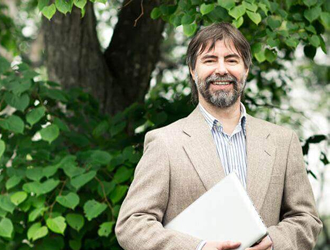
- Saudi Arabia
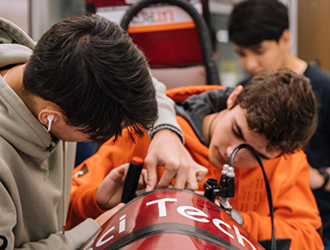
- TEFL Courses
- TEFL Certification Guide
- Teacher Certification Guide
- Certification Programs
- Pre-K/ECE centers
- K to 12 Schools
- Language Schools
- Online Teaching
- Governments / Ministries of Education
- Recruitment Subscriptions
- Full-Service Recruitment
- About the Platform
- Request a Demo


Second Language English Teacher
- High School
- Licensed Teacher, ESL Instructor
- Education Required: Bachelor
- Minimum Teaching Experience: 2 years of teaching experience
- Required Certificates: Teaching Credential/License TESL/TEFL Certificate over 100 hours TESL/TEFL Certificate
- Work Visa Eligibility: United States (USA), United Kingdom (UK), Canada, South Africa, Ireland, Australia, New Zealand
Qualifications:
- Bachelor’s degree in Education, English, Linguistics, or related field.
- Teaching certification or qualification in English as a Second Language (ESL) or Teaching English to Speakers of Other Languages (TESOL).
- Proven experience in teaching English as a second language, preferably in diverse cultural and linguistic contexts.
- Strong understanding of second language acquisition theories and methodologies.
- Familiarity with the CEFR framework and its application in language teaching and assessment.
- Excellent communication and interpersonal skills, with the ability to effectively engage and motivate learners of varying proficiency levels.
- Creative and adaptable approach to lesson planning and delivery, with a commitment to continuous professional development.
If you are enthusiastic about helping students achieve their language learning goals and are dedicated to fostering a positive and inclusive learning environment, we encourage you to apply for this rewarding opportunity!
- One of our goals at VMA is to create an equal work and life balance, and we will also provide you with:
- Multiple on-campus, domestic, and international Professional Development opportunities
- Competitive compensation
- Holiday allowance and birthday benefit
- Relocation allowance
- Flight allowance
- A pension plan
- Global health insurance and Social Insurance
- Housing allowance
- Free tuition for VMA staff's child entering VMA
- Paid public holidays, winter and summer holidays, Christmas holidays
- Outings and various activities
- Mandarin classes
- Two 0.5-day paid personal leave per month and 15-day paid sick leave per academic year
- Marriage leave, bereavement leave, and maternity leave by Chinese laws
Join us in creating a community of learners!
We are seeking a passionate and dedicated Second Language English Teacher to join our team. As a Second Language English Teacher, you will be responsible for creating a dynamic and engaging learning environment where students can develop their English language skills effectively. Your primary focus will be on student-centered learning, ensuring that each lesson integrates the four essential language skills—listening, speaking, reading, and writing.
Key Responsibilities:
- Student-Centered Learning: Design and implement lessons that prioritize active student participation and engagement, fostering a collaborative and supportive learning environment.
- Integrated Skills Approach: Incorporate all four language skills—listening, speaking, reading, and writing—into every lesson to ensure comprehensive language development for students.
- Lesson Planning: Develop well-structured lesson plans that follow the PR (Presentation, Practice, Production, Review) framework, allowing for effective introduction, practice, and reinforcement of language concepts.
- Teaching to Different Learning Styles: Recognize and accommodate various learning styles and preferences within the classroom, utilizing diverse teaching methods and resources to meet the needs of all students.
- Utilization of Common European Framework of Reference (CEFR): Align teaching objectives and assessment criteria with the CEFR standards to ensure consistency and clarity in language learning goals.
- Cycled Assessment: Implement regular and ongoing assessment strategies to evaluate student progress in speaking, reading, listening, and writing skills. This includes formative assessment throughout lessons and summative assessment at the end of each cycle.
Applications for this position will be received directly by the school and will not be reviewed by Teach Away's Placement Coordinators.
Any communication about the job will take place directly between you and the institution. Tracking of your application status will take place within the application tracking system used by the school you are applying to (outside of your Teach Away Dashboard).
Introduction to Vanke Meisha Academy:
Vanke Meisha Academy (VMA) is a private, international, bilingual boarding high school that contributes to the betterment of society by cultivating respectful, responsible, highly skilled leaders ready to be of service to the world. Excellent teachers and a proactive counseling program deliver an innovative curriculum, emphasize academic achievement, impart healthy habits, and inspire student engagement and both interpersonal and emotional growth. Committed to maximizing every community member's potential, we support over 70 student-run organizations and generously fund faculty professional growth. We are proud to announce that, as a result of our efforts, we were fully accredited by the Western Association of Schools and Colleges (WASC)!
Our 653,000-square-foot state-of-the-art campus is in the clean and beautiful beach resort district of Shenzhen, China. The campus offers clean air and an impeccable natural environment in addition to gym facilities and beach access. Furthermore, we are less than 30 minutes away from the bustling global metropolis of Hong Kong, and approximately 20 minutes away from the Shenzhen city center.
About the Curriculum:
VMA offers three major curriculum programs: Sino-US Integrated Curriculum (US Track), Sino-UK Integrated Curriculum (UK Track), and VMAA Curriculum (VMAA, namely Vanke Meisha Arts Academy). Students in the three programs can apply to universities all over the world for further study, not just in one country or region.
About Shenzhen:
Shenzhen, known as "China's Silicon Valley," is a large, young, and vibrant city with a burgeoning technology industry that promises continued economic growth. Despite its relative youth, the city is a bustling global metropolis with its stock exchange, highly developed and accessible public transportation, a growing population of accomplished, sophisticated, and motivated ex-pats, and access to all Western amenities including food and nightlife. Furthermore, Shenzhen is located only 30 minutes away from the global financial and cultural metropolis of Hong Kong, one of the most developed cities in the world. Together, the Shenzhen and Hong Kong international airports offer you easy access to all of Asia. VMA is located in Dameisha, the beach resort section of Shenzhen, which promises clean air, low traffic congestion, and a fantastic living experience.
One of the world's most powerful nations, China's cultural contributions have influenced history and human development for thousands of years. Teach Away offers ESL teaching jobs in reputable language schools as well as licensed teaching jobs across China.
Similar Jobs

Global Perspectives and Research Teacher
Physics teacher, english language art teacher, save this job for later.
You must be logged in to save jobs.
Create an account
B.I returns with 'TO DIE FOR': K-pop soloist reflects on inspirations, emotions and growth

Throughout his career, B.I has taken on many roles: dancer, rapper, singer, songwriter and producer. The 26-year-old started in the industry at just 11 years old, and since then, B.I has grown, changed and evolved, not only as an artist but as a person.
Over the last decade-plus, B.I has successfully tackled various genres and projects and hit high achievements, including being awarded "Songwriter of the Year" at 22.
On June 1, the South Korean artist released his second studio album " TO DIE FOR ", which explores the themes of love, youth and resistance. USA TODAY spoke with B.I about his music, inspiration and his growth since his debut.
Who is B.I?
Kim Han-bin, also known as B.I , is a South Korean rapper, singer-songwriter and producer. Born on Oct. 22, 1996 in Cheonan, B.I has become an influential figure in South Korea's music scene.
Need a break? Play the USA TODAY Daily Crossword Puzzle.
B.I has competed in music television shows, wrote and produced for himself and others, debuted as a solo artist and served as a label executive.
For B.I, making music has become second nature. "The music is part of my life. I started when I was 11; It’s more than half of my life," he said.
B.I was awarded "Songwriter of the Year" at the Melon Music Awards in 2018. Not long after, he became a full member of the Korea Music Copyright Association, now with 104 songs registered under his name . B.I's credits include songs for himself as well as big names in South Korea, such as Epik High , Blackpink , PSY and LeeHi , among others.
In 2021, B.I debuted as a solo artist under his self-founded label, 131 Label . His first studio album " WATERFALL " released June 1, 2021 with " illa illa " as the title track. The song's music video broke the record for the most viewed Korean male solo artist debut music video in its first 24 hours.
Since then, B.I has released one EP, one half album and his latest studio album, as well as countless singles. His single " BTBT " featuring Soulja Boy and DeVita charted at No. 1 on iTunes in over 40 countries and has received over 104 million streams on Spotify.
B.I's second studio album 'TO DIE FOR' released June 1
"TO DIE FOR" serves as a continuation of B.I's half album " COSMOS ."
The studio album - ranging from rap and rock to electronic and dubstep - includes 15 tracks, six of which were featured on his half album.
"I valued the message and the lyrics the most for each song," he said.
B.I wanted to dive deeper into resistance as heard on tracks such as " Beautiful Life " featuring Korean punk pioneers Crying Nut and " Wave " featuring Kid Milli and Lil Cherry.
"I’m trying to put more variants and diverse genres and styles of music on the album," B.I said. "I think it’s more experimental than before. It has more power than the other songs that I have."
The writing and creative process of 'TO DIE FOR'
B.I strives to create something new and exciting with each song. "It's difficult," he said. "I’m trying to put all my energy into it and put a lot of effort on it."
B.I takes inspiration from movies, poems and his own experiences. His creativity has also been influenced by comics. " MICHELANGELO " contains a few lines from "Fullmetal Alchemist," he said.
There is a cinematic nature to B.I's music, and this is exemplified in "TO DIE FOR"'s compilation video . The six-minute music video features excerpts from the album's tracks.
"You know that it was youth only when time has passed," B.I. said. "I wanted to make it like a short film where you remember by the scenes."
Growing up and the loneliness of love, youth
B.I's experiences have helped him grow up. "A lot of things got changed," he said.
While his desire to create has remained consistent, B.I says other aspects of his life have shifted. "I tend to stay home more now than before. I don’t know why," he said. "I didn’t intend it, but I’m making myself lonely."
B.I finds solace in the loneliness: "I like that feeling. I like that emotion."
On "TO DIE FOR", B.I reflects on loneliness, including how both youth and love can lead to it.
"When you’re in love with someone, it’s not always equal," he said. "One side is always loving the other more and that can make that person feel lonely."
What's next for B.I?
He is planning his third album's concept. And though it's a little early to talk about it, B.I just wants to keep telling stories through his music.
He also expressed immense gratitude for his fans, or IDs as they are known, for their continuous love and support. B.I wants to keep sharing music for his fans. "If you just call me to the U.S., I’m ready to show some styles," he said. "Someday, (I hope) I can go to visit the U.S. and meet all my fans in the states."
Are you ready for more? Catch up on K-pop?
- XG Interview: Girl group talks 'Left Right' and 'Shooting Star', messages for fans and more
- CIX Interview: Everything you need to know about the K-pop group
- NCT Dream interview: NCT Dream on the group's first US tour, members and more
- Enhypen drops 'Dark Blood' new music: All you need to know about the K-pop 'powerhouses'
- Meet Tomorrow X Together: A guide to the group's members, tour, awards and more
- Recap: Tomorrow X Together makes its mark on DC during 'Act: Sweet Mirage' world tour
- 'Blackpink in your area': Everything to know about the alluring group's members, tour and more
- 'I'm Fearless': Get to know Le Sserafim, K-pop's rising girl group
- Everything you need to know about girl group Twice

Inclusion is Innovation
Stories behind the innovation.
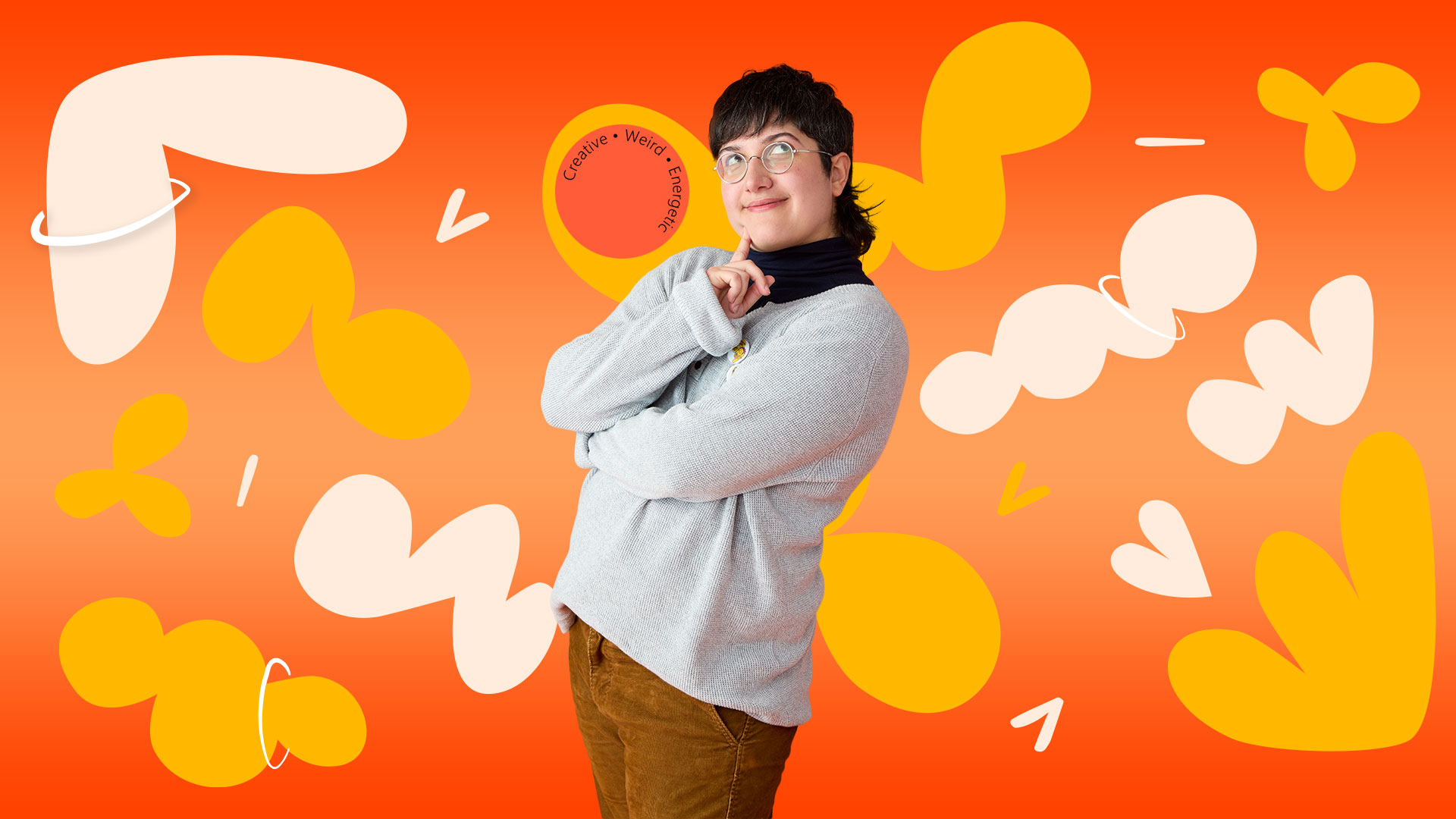
Freedom in self-expression
Emerging from a journey of self-discovery and embracing their nonbinary identity, Caroline Scalley, senior business administrator at Microsoft, embodies resilience. Drawing from their Puerto Rican heritage and love for self-expression, Caroline blends humor with originality and compassion in their role, redefining norms through unique understanding.
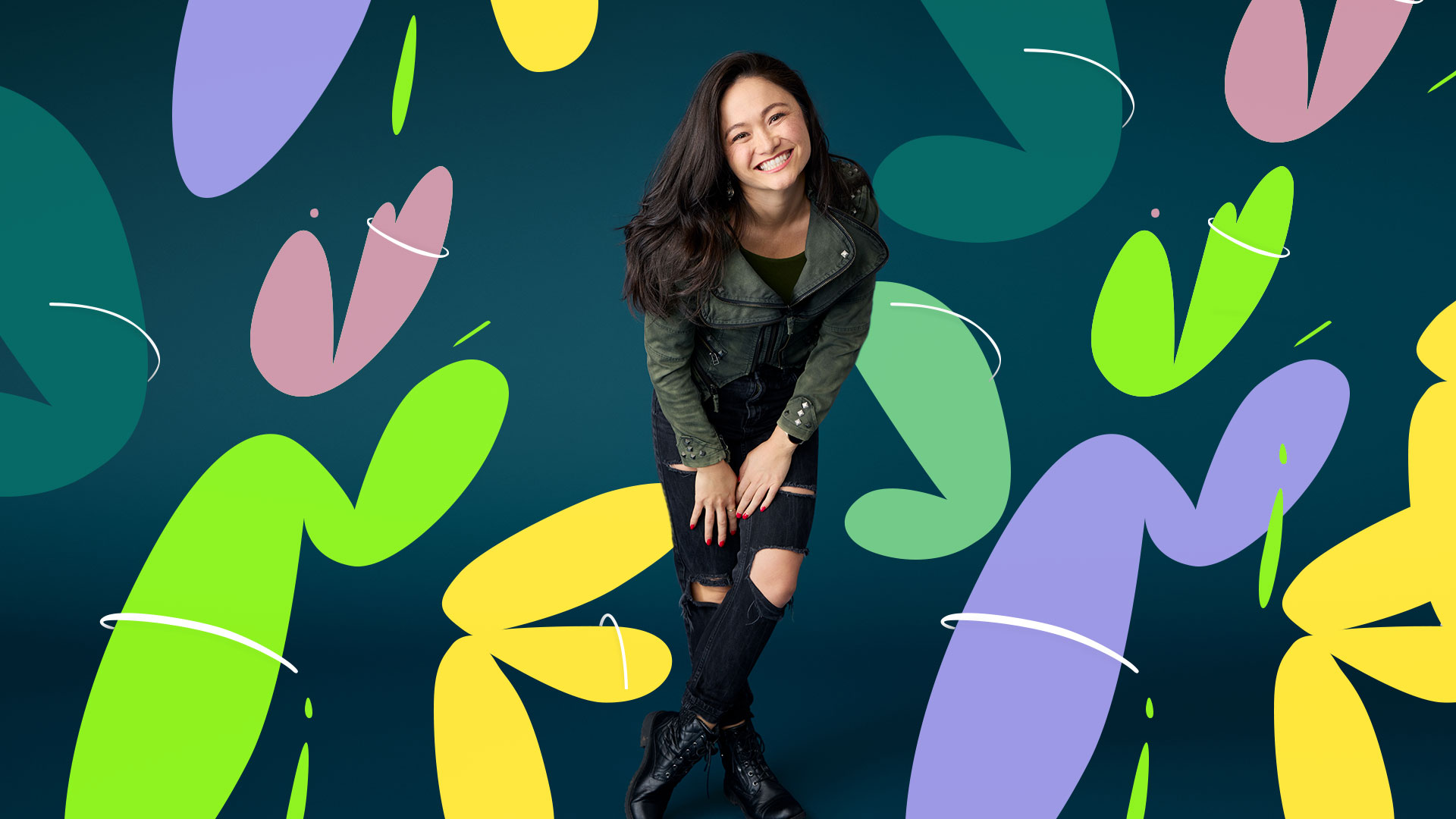
“You are enough. You wouldn’t be here if someone here didn’t think you were incredible.”
Raised with values rooted in her Japanese heritage, Megumi Voight found solace in community during deployments while in the military. Now as a managing editor of customer storytelling at Microsoft, she empowers global voices, advocating for authenticity and reminding others of their inherent worth.

Utilizing your superpower
Armed with what he calls “super empathy,” Joao Madureira, principal customer reliability engineer at Microsoft, harnesses inclusivity as his strength. As a gay man and a Latino, he activates allyship in the workplace, ensuring all voices are heard. His actions have not only brought in new talent but also propelled inclusivity forward.

Near and dear
Keepsakes that get passed through generations of a connected family can unlock hidden characteristics of our colleagues. Cynthia Bryant presents us with some of hers that showcase her mom’s creativity and how she encourages herself to fly.

Dismantling the stereotype
Empowered to explore their gender expression fully while working from home, Iain Raleigh, a software engineer at Microsoft, felt supported when it was time to work in an office again. To dismantle the idea of what a software engineer should look like, they advocate for each one of us showing up as our full selves.
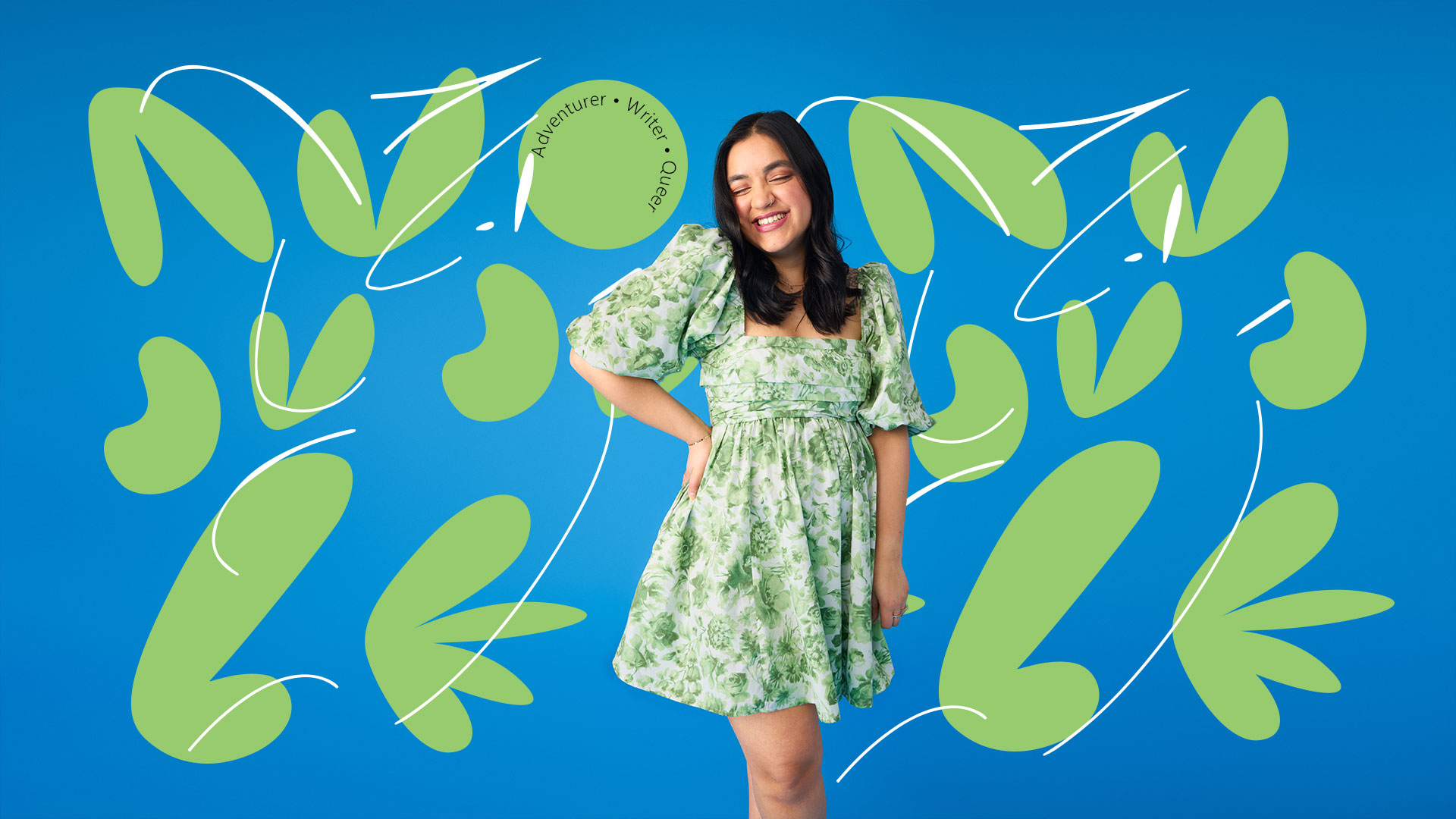
“When you know what you’re worth, when you know what you stand for, it changes how you show up.”
Nurtured by the wealth of knowledge found in public libraries, Aleenah Ansari, a product marketing manager at Microsoft, noticed the lack of stories that reflected her experience as a queer Pakistani woman. Determined to bridge this gap, she strives to make technology more accessible through inclusive and authentic storytelling.

“Your uniqueness makes you who you are.”
Inspired by her early love for fantasy and gaming, Christina Parker champions diversity and representation in the gaming industry, explaining the accuracy of portrayals and the importance of players seeing themselves in the virtual worlds they love.

Tosh’s journey through time
There are artifacts in our lives that represent how we connect to the world around us. Tosh Hudson shares how journaling, music, and plants, for him, represent a willingness to release, learn, and grow.
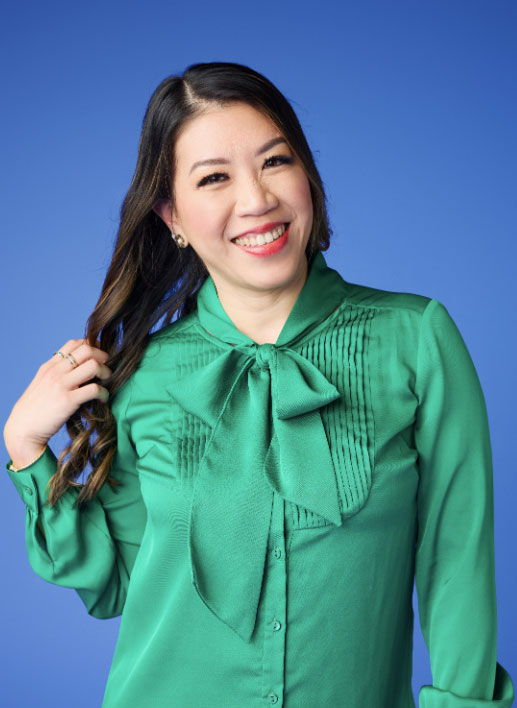
Art of cherishing memories
Sometimes our possessions remind us of our favorite places or home. Athena Chang shares the items that take her back to Taiwan, Prague, and New York.

When innovation and passion collide
Jerome Collins discusses the influence of his father’s guidance, his passion for art and music, and his innovative approach to driving positive change and representation in his professional sphere.

“At the end of the day, I think that’s what people want: to be heard.”
Guided by a gift for listening and a commitment to motherhood, Erin Jagelski shares how she navigated post-maternity challenges and pioneered support networks for parents in the workplace by blending her passion and leadership to foster inclusive environments.
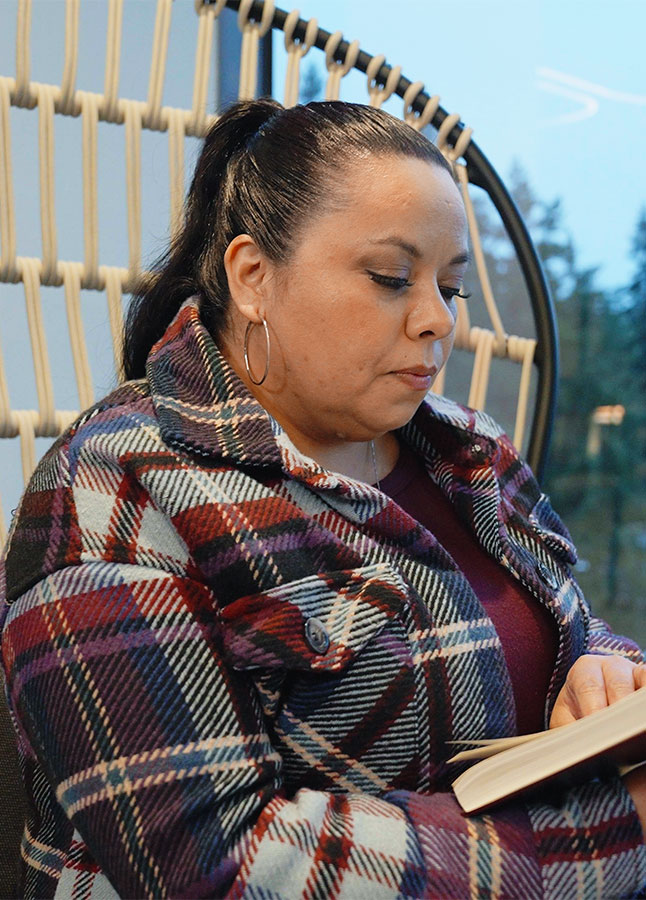
Melissa Curry’s treasures of heritage and achievement
Our possessions showcase the things that really matter to us. Melissa Curry unveils the artifacts that encapsulate her heritage, achievements, and bonds that shape her. Tell us about the artifacts that weave the fabric of your story.
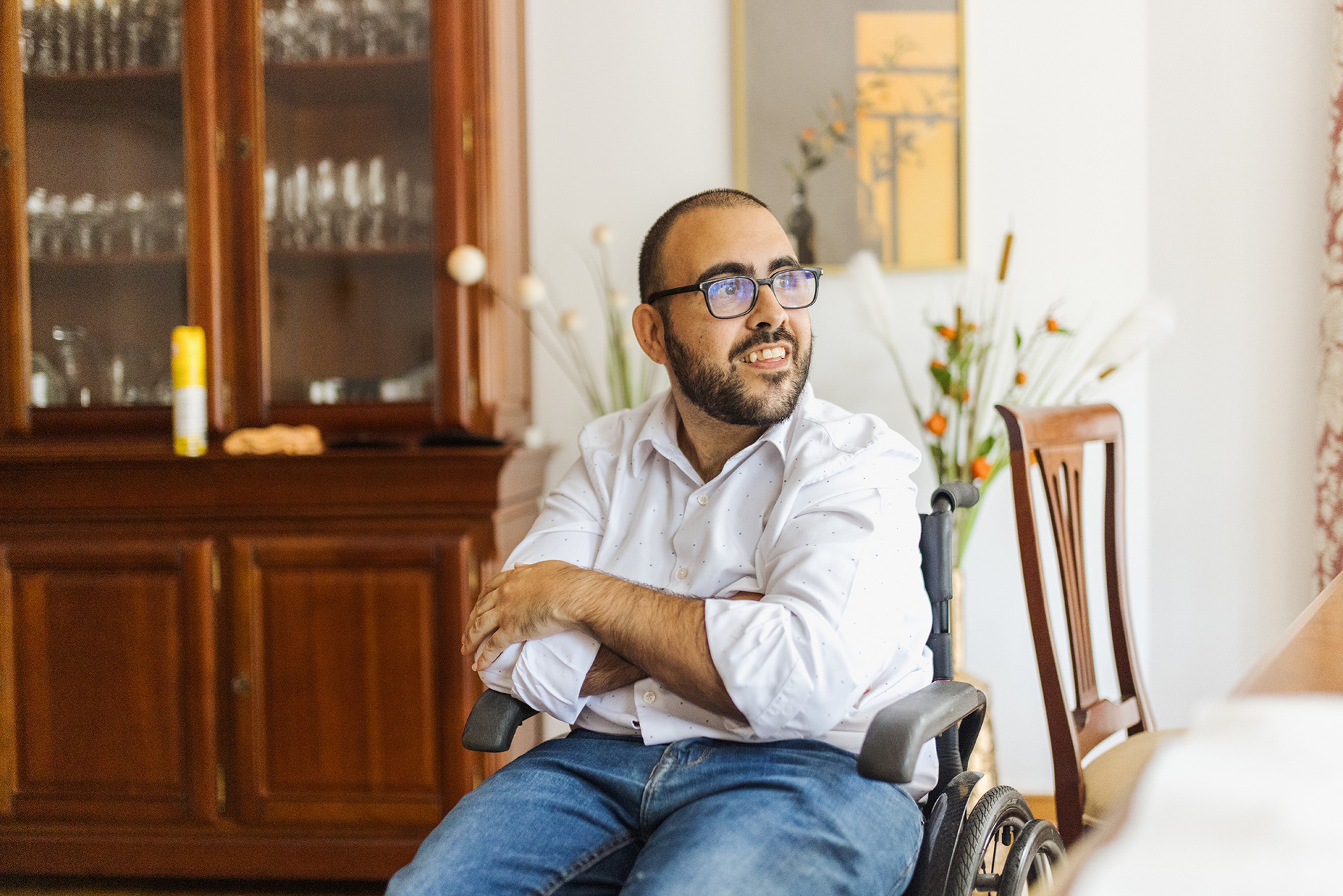
I don’t have the option to be shy
Gonçalo Mendes has always yearned for independence. His journey with cerebral palsy led him from relying on others for care to taking care of others.
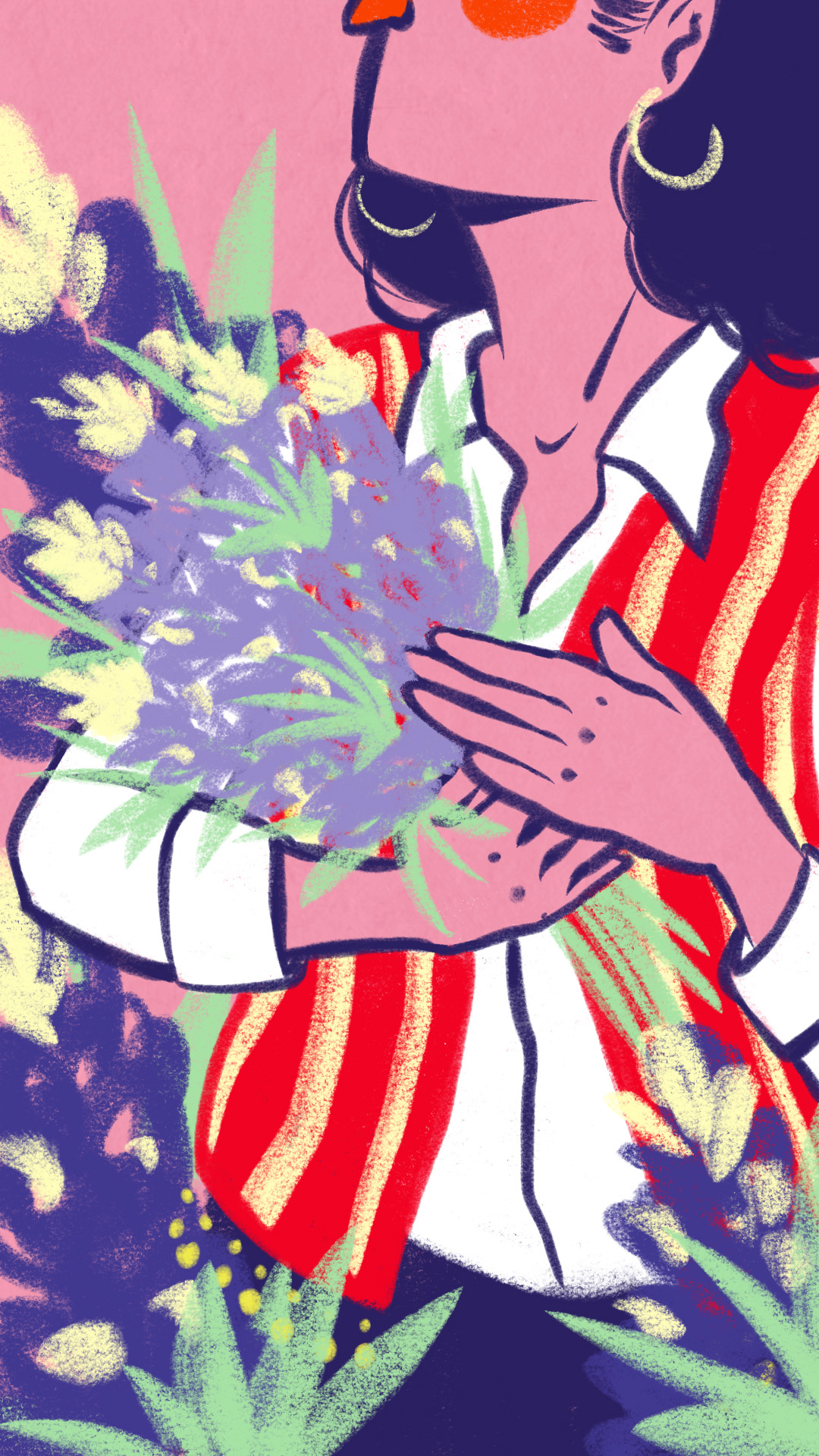
Embrace your identity, embrace life
Kimberly Marreros Chuco discusses embracing one’s unique identity and learning from challenges, emphasizing the importance of adaptability and accepting mistakes as part of growth, inspired by her experiences moving from an Andean mining town. Featured Artist: Tai Silva

Ashley Witherspoon Innovator’s Inventory and the big plans she’s made
Our personal treasures hold the stories of who we are. Ashley Witherspoon shares the tangible symbols of her values and journey. What mementos narrate your life’s chapters?
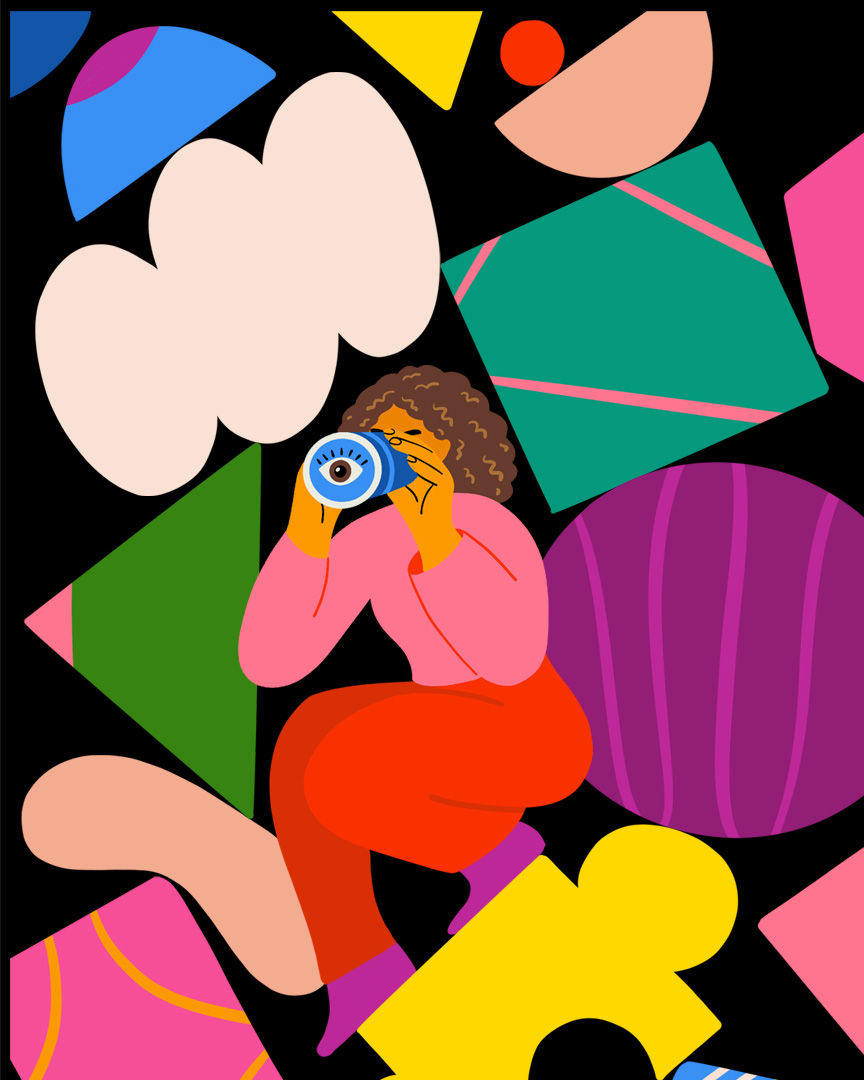
This is my sazón
Ivelisse Capellan Heyer is a user experience designer who uses patience and her family to combat her own self-doubt. Featured Artist: Sol Cotti

Nurturing inner peace
When Ethan Alexander started at Microsoft, he prioritized money over his wellbeing. Twelve years later, the senior customer success account manager and D&I storytelling host knows that the only way to truly take care of others is to first take care of yourself. Discover his story of gratitude and growth. Featured Artist: Camila Abdanur
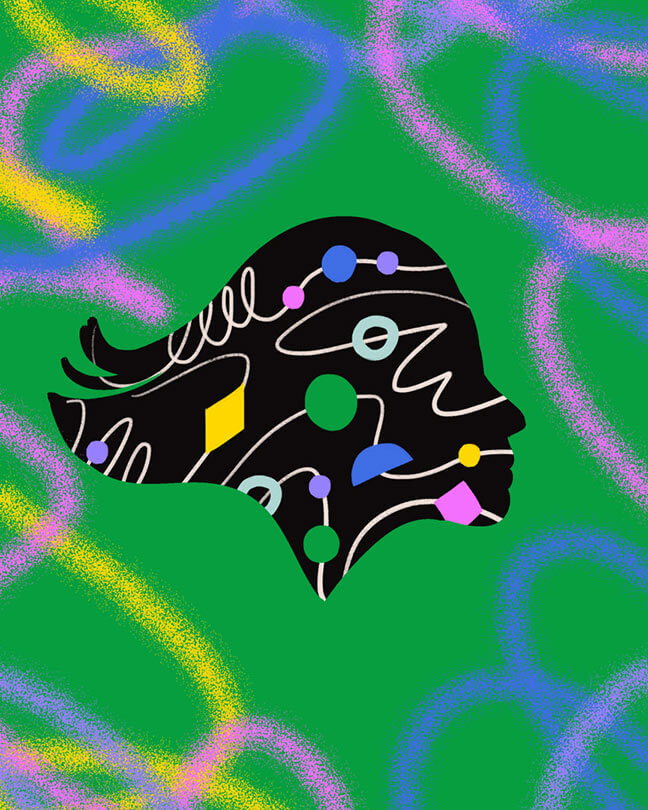
Master of messiness
As a mom and a tech leader, Elaine Chang has learned to embrace the chaos and put her “octopus mind” to work in service of innovation, at work and at home. Featured Artist: Niege Borges

What leaders look like
Shrivaths Iyengar worried that coworkers would be reluctant to follow a leader who had disabilities. Instead, he discovered that his experiences made him a stronger, more empathetic manager. Featured Artist: Ananya Rao-Middleton
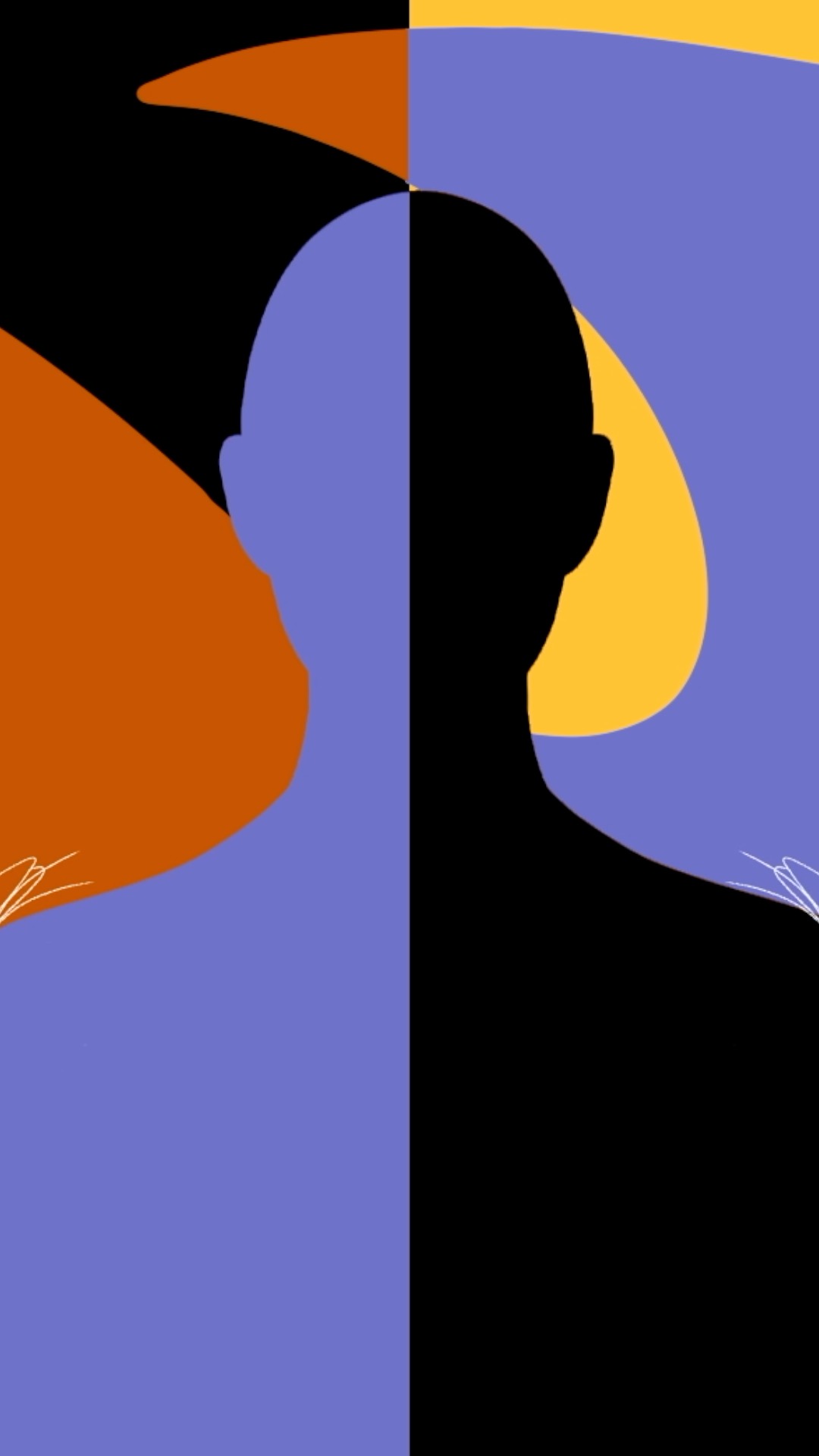
Experiencing both sides
As a child, Ana Sofia Gonzalez crossed between Juárez, Mexico , and El Paso, Texas, every day to go to school. Learning how to live, communicate, and connect in both cultures has made her a better designer, mentor, and innovator. Featured Artist: Dai Ruiz
Real progress requires real work
Innovation demands intention., innovation thrives on insight., innovation requires introspection., innovation calls for investment..

“If there’s a family issue … you have enough grace to be able to take care of it.”
Communities.
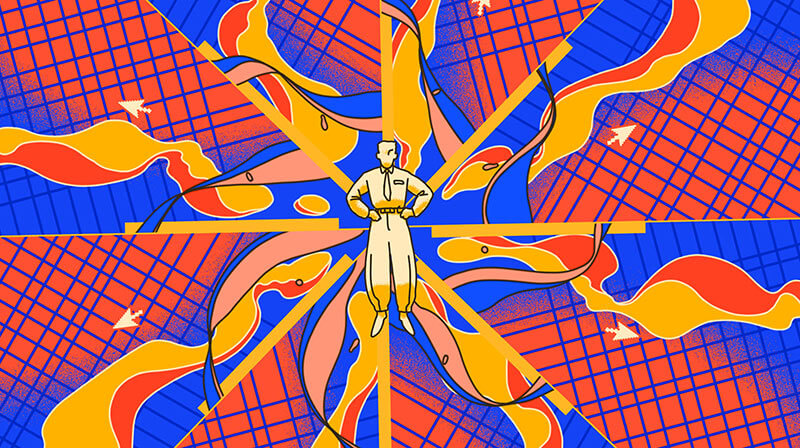
LGBTQIA+ communities

Women’s community
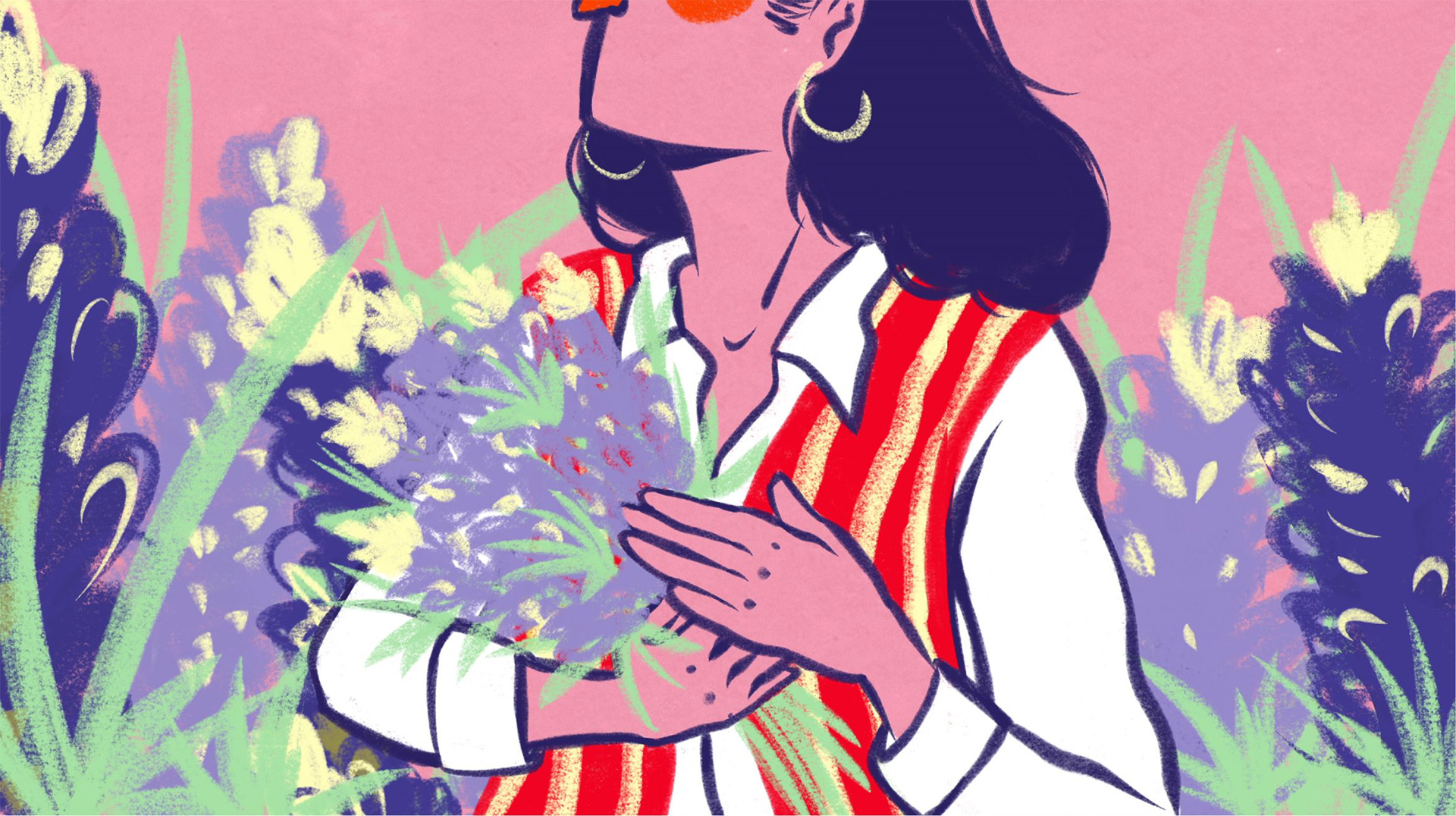
Indigenous community
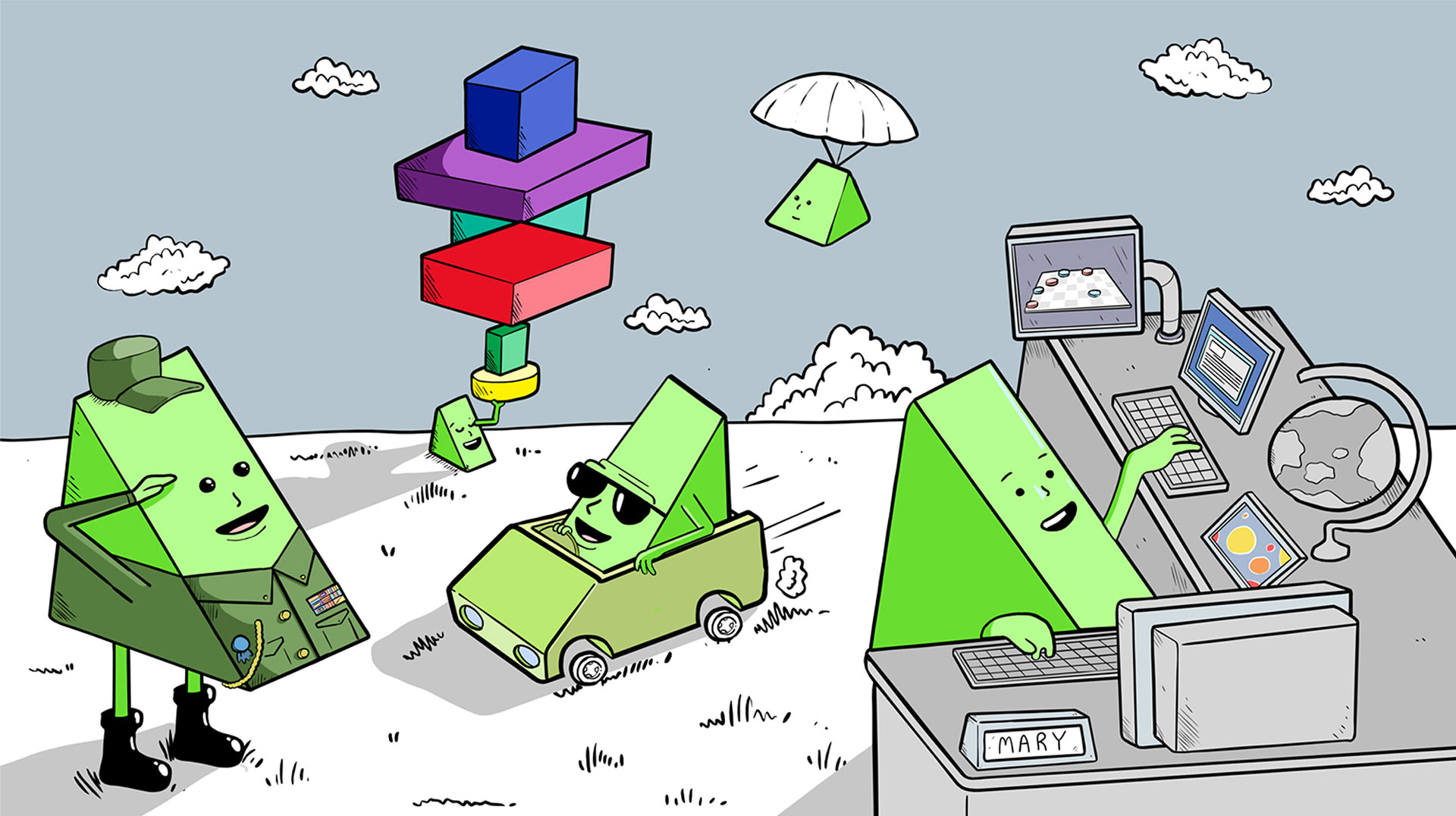
Military community

Black and African American community
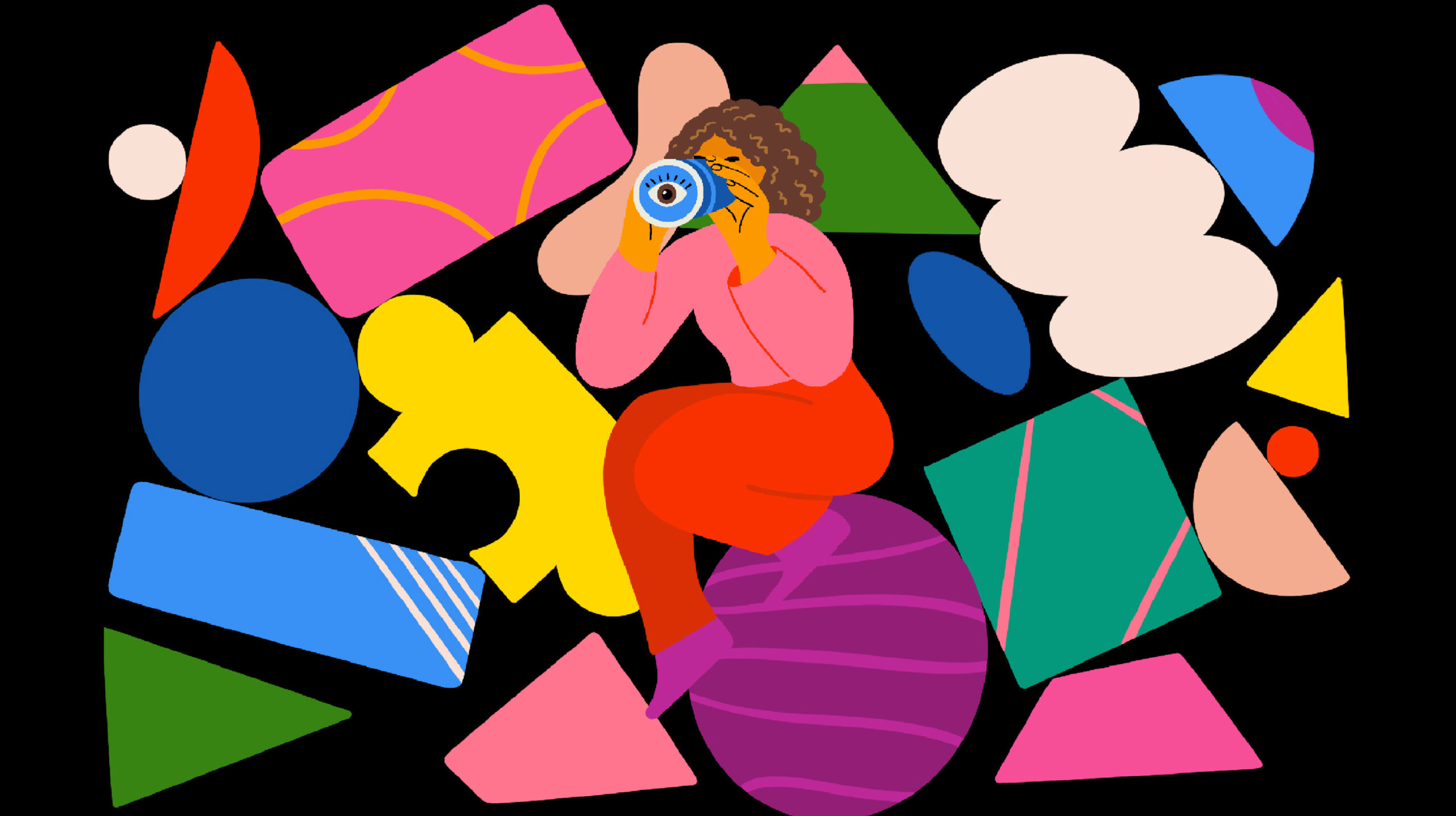
Hispanic and Latinx community

Asian & Pacific Islander community

Disability community
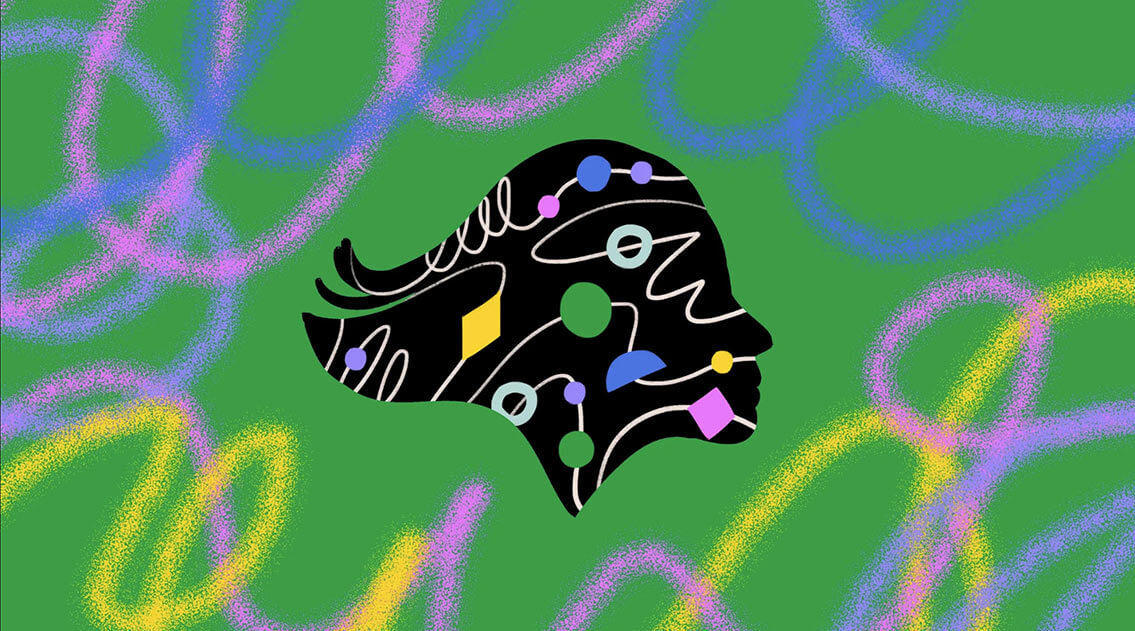
Families community
Explore more ways to engage.

Backgrounds
Share this page:.

IMAGES
VIDEO
COMMENTS
This volume explores the instructional use of creative writing in secondary and post-secondary contexts to enhance students' language proficiency and expression in English as a second or foreign language (ESL/EFL). Offering a diverse range of perspectives from scholars and practitioners involved in English language teaching (ELT) globally ...
ABSTRACT. This timely and accessible book offers engaging guidance to teachers of second language students on teaching creative writing in their classrooms. Creative writing is a tool that can inspire second language learners to write more, play with language, and enjoy and improve not only their writing, but also their speaking, listening, and ...
In order to engage less motivated students, a series of creative writing assignments was implemented in a second language writing course. This study presents the rationale for the use of creative writing grounded in critical pedagogy and the context of instruction. Data collection focused on the content of students' writing and their ...
Creative Writing is rarely included in the curricula of English language learners in Japanese. higher and further education. Ho wever, students ' creative use of language, in particular in ...
3 The use of the theoretical and methodological tools developed within the educational sciences to examine this programme sought to render visible how the teaching-learning practice analysed here, guided students to experience and experiment a creative use of the English language. This is a research question of particular interest: creative writing is a relatively new field which is difficult ...
This volume explores the instructional use of creative writing in secondary and post-secondary contexts to enhance students' language proficiency and expression in English as a second or foreign language (ESL/EFL). Offering a diverse range of perspectives from scholars and practitioners involved in English language teaching (ELT) globally, International Perspectives on Creative Writing in ...
Exploring Second Language Creative Writing continues the work of stabilizing the emerging Creative Writing (SL) discipline. In unique ways, each essay in this book seeks to redefine a tripartite relationship between language acquisition, literatures, and identity. All essays extend B.B. Kachru's notion of "bilingual creativity" as an enculturated, shaped discourse (a mutation of the ...
Routledge, Feb 10, 2022 - Education - 212 pages. This volume explores the instructional use of creative writing in secondary and post-secondary contexts to enhance students' language proficiency and expression in English as a second or foreign language (ESL/EFL). Offering a diverse range of perspectives from scholars and practitioners ...
Many students find poems and haikus more approachable when attempting creative writing in their second language since rules of form can be applied loosely. Exploration, word choice and feeling can all be construed with the possibility of more abstract wordplay that can be beneficial when exploring word pairings and expressions of thought.
1 The objective of this paper is to present some preliminary conclusions on the defining aspects of. creative writing, and in particular creative writin g in second and foreig n language learning ...
Abstract. The purpose of this autoethnographic study is to advance our understanding regarding the use of the creative function of a second language respecting the second language writer's insight ...
This conceptual autoethnographic study explored how creative writing in a first language differs from using the creative function in a second language. The study revealed that after using the poetic function of language, the author experienced progress in her writing because of the following enlightening arguments:
Zhao, Yan. Second Language Creative Writers: Identities and Writing Processes. Multilingual Matters, 2015. For Jacques Derrida, language is a habitat that contours one's "ipseity" (1). He addressed the complex-ity generated in one's sense of the self when one speaks a language that is not one's own, but a legacy of the colonial ...
Creative Writing is rarely included in the curricula of English language learners in Japanese higher and further education. However, students' creative use of language, in particular in literary writing, may serve as an aid to certain aspects of language acquisition (particularly grammar and certain kinds of vocabulary), as well as address issues of communicative competence as English L2 ...
Description. This timely and accessible book offers engaging guidance to teachers of second language students on teaching creative writing in their classrooms. Creative writing is a tool that can inspire second language learners to write more, play with language, and enjoy and improve not only their writing, but also their speaking, listening ...
This volume explores the instructional use of creative writing in secondary and post-secondary contexts to enhance students' language proficiency and expression in English as a second or foreign language (ESL/EFL). Offering a diverse range of perspectives from scholars and practitioners involved in English language teaching (ELT) globally, International Perspectives on Creative Writing in ...
This timely and accessible book offers engaging guidance to teachers of second language students on teaching creative writing in their classrooms. Creative writing is a tool that can inspire second language learners to write more, play with language, and enjoy and improve not only their writing, but also their speaking, listening, and reading ...
Don't worry too much- just write: Grammar can be learned, typos can be corrected. What's most important is that you have a story to tell. Get that first draft out and don't worry too much about the language (yet). I usually write my first draft during NaNoWriMo. Find some good editors, preferably native speakers.
This timely and accessible book offers engaging guidance to teachers of second language students on teaching creative writing in their classrooms. Creative writing is a tool that can inspire second language learners to write more, play with language, and enjoy and improve not only their writing, but also their speaking, listening, and reading skills.
University level second language (L2) creative writing courses are widespread around the world. However, little empirical research has been done to document teachers and students' experiences with courses whose main focus is to develop students' creativity. In response, this case study was conducted to explore how an English native-speaking ...
The purpose of this autoethnographic study is to advance our understanding regarding the use of the creative function of a second language respecting the second language writer's insight, mindset, and perceptions. This conceptual autoethnographic study explored how creative writing in a first language differs from using the creative function in a second language.
The primary goal of this research is to examine how creative writing-based methods impact the development of narrative skill in students who are learning Greek as a second language at the A1-A2 ...
Studying creative writing in your second language. In October I will start a course of creative writing in English, my second language. I definitely prefer writing narrative in my mother tongue, but I'm pretty sure the course will be beneficial for my writing regardless of the language. Anybody had similar experiences and feel like sharing how ...
We are seeking a passionate and dedicated Second Language English Teacher to join our team. As a Second Language English Teacher, you will be responsible for creating a dynamic and engaging learning environment where students can develop their English language skills effectively. Your primary focus will be on student-centered learning, ensuring that each lesson integrates the four essential ...
To investigate whether a creative writing unit in upper secondary education would improve students' creative as well as argumentative text quality and to examine whether it would change students' writing behavior, we tested a creative writing unit based on encouraging writing in flow by using divergent thinking tasks. Four classes (Grade 10) participated in a switching replications design.
K-pop soloist B.I released his second studio album 'TO DIE FOR' June 1. USA TODAY spoke with B.I about his music, inspirations and growth since debut.
We're activating the same ingenuity, intention, and experience behind our most groundbreaking technological innovations to develop solutions to the diversity and inclusion challenges in our workplace and our world.